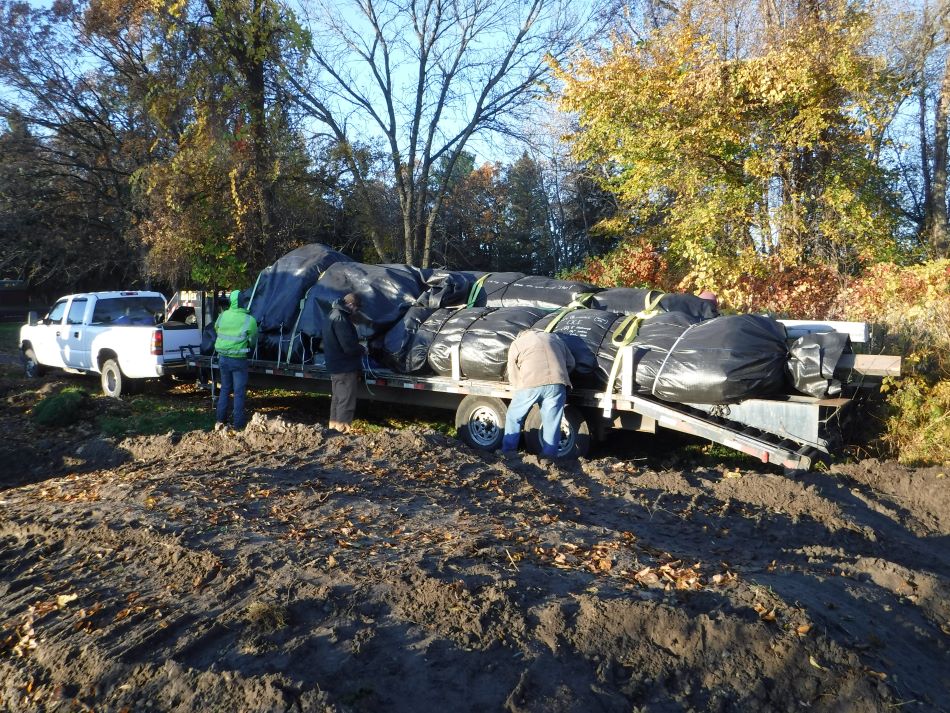
Two AquaDams will be used for this job. An 8ft tall 17ft wide (fully filled) 450ft long single closed end AquaDam® with a connection collar and a 2.5ft tall 5ft wide 600ft long double closed end AquaDam® with no connection collar.
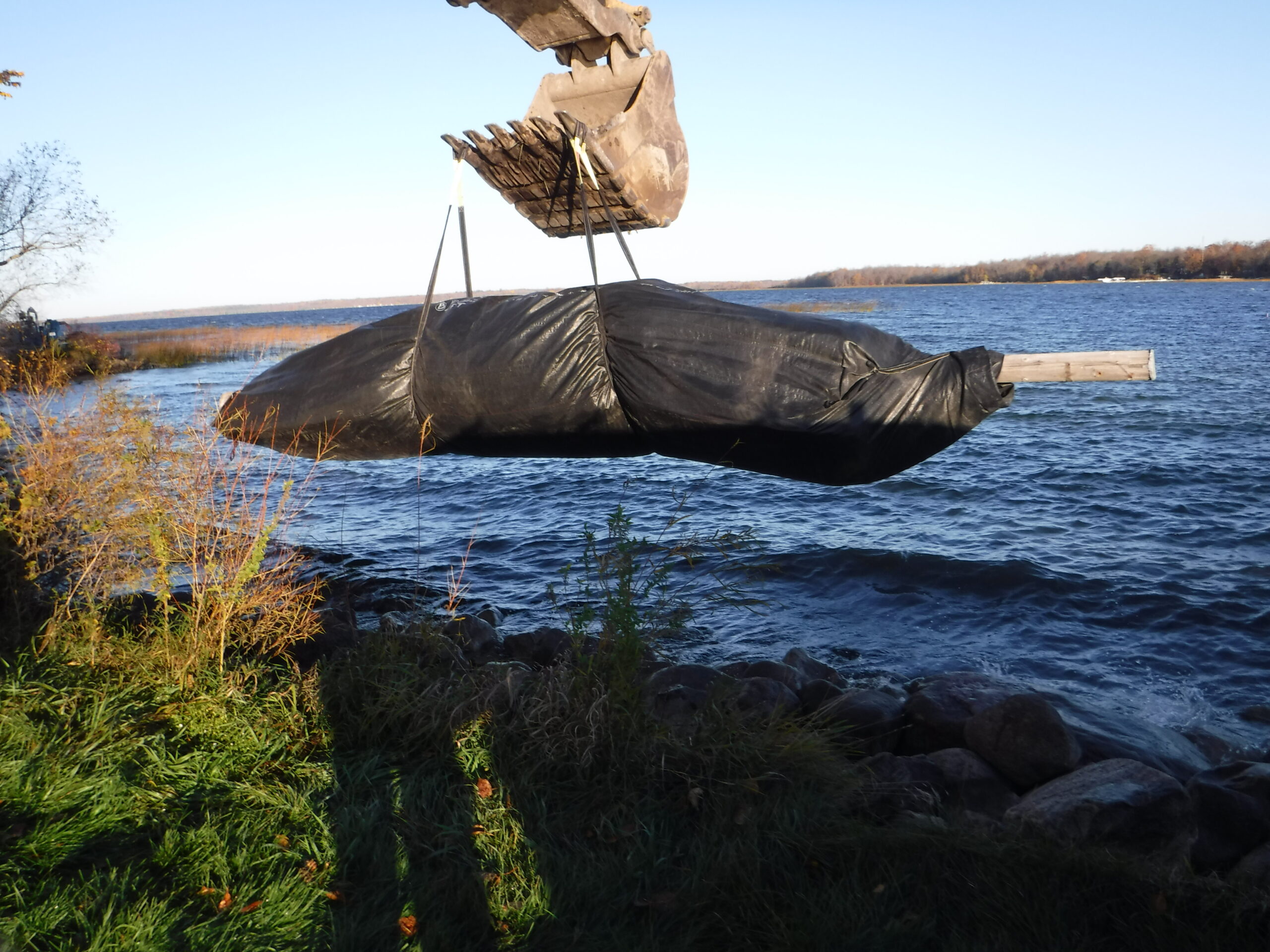
AquaDams become much easier to maneuver in water because they float.
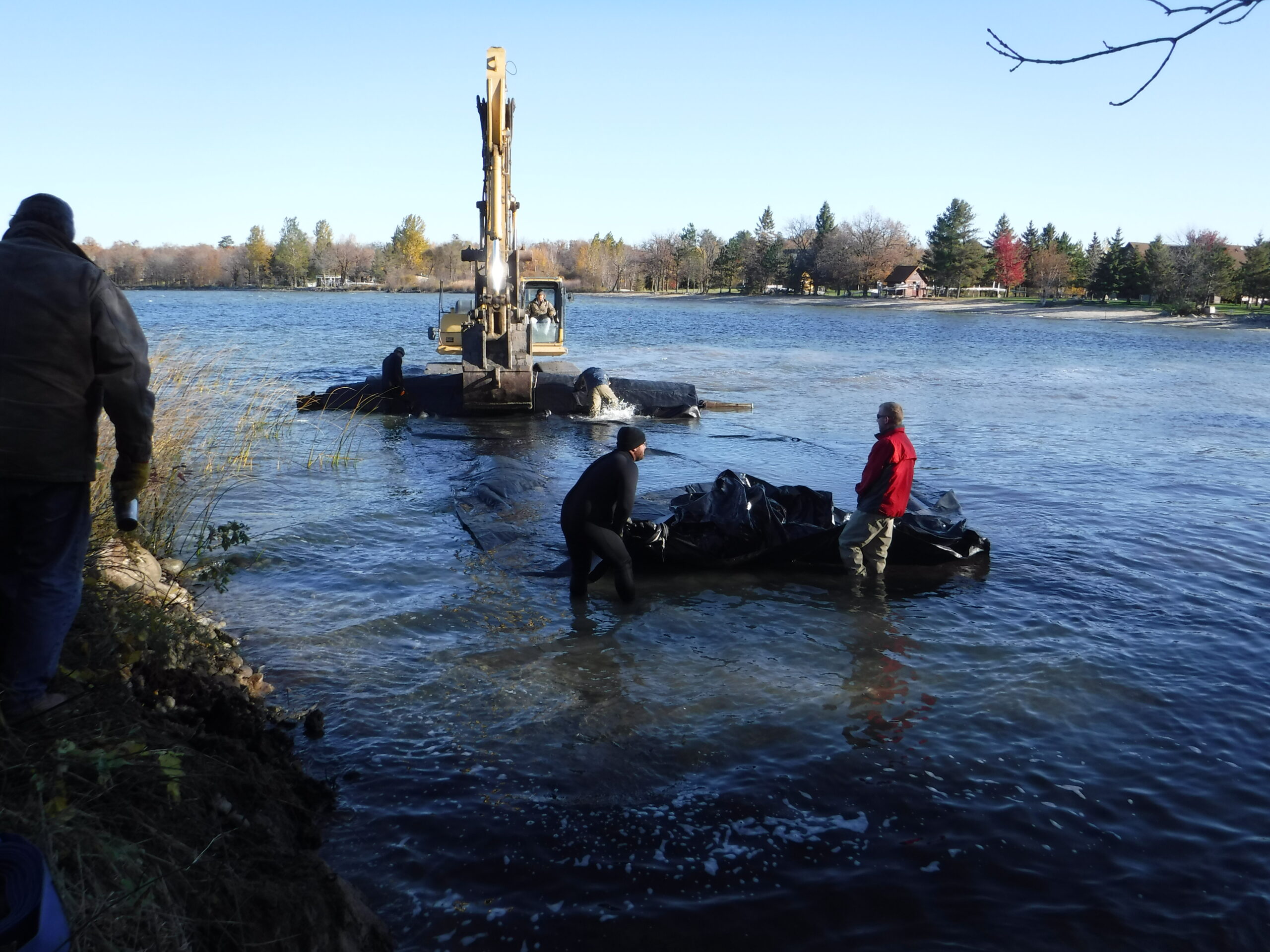
For this project, several feet of the AquaDam® were unrolled to allow slack for in the cofferdam to go up the starting bank.
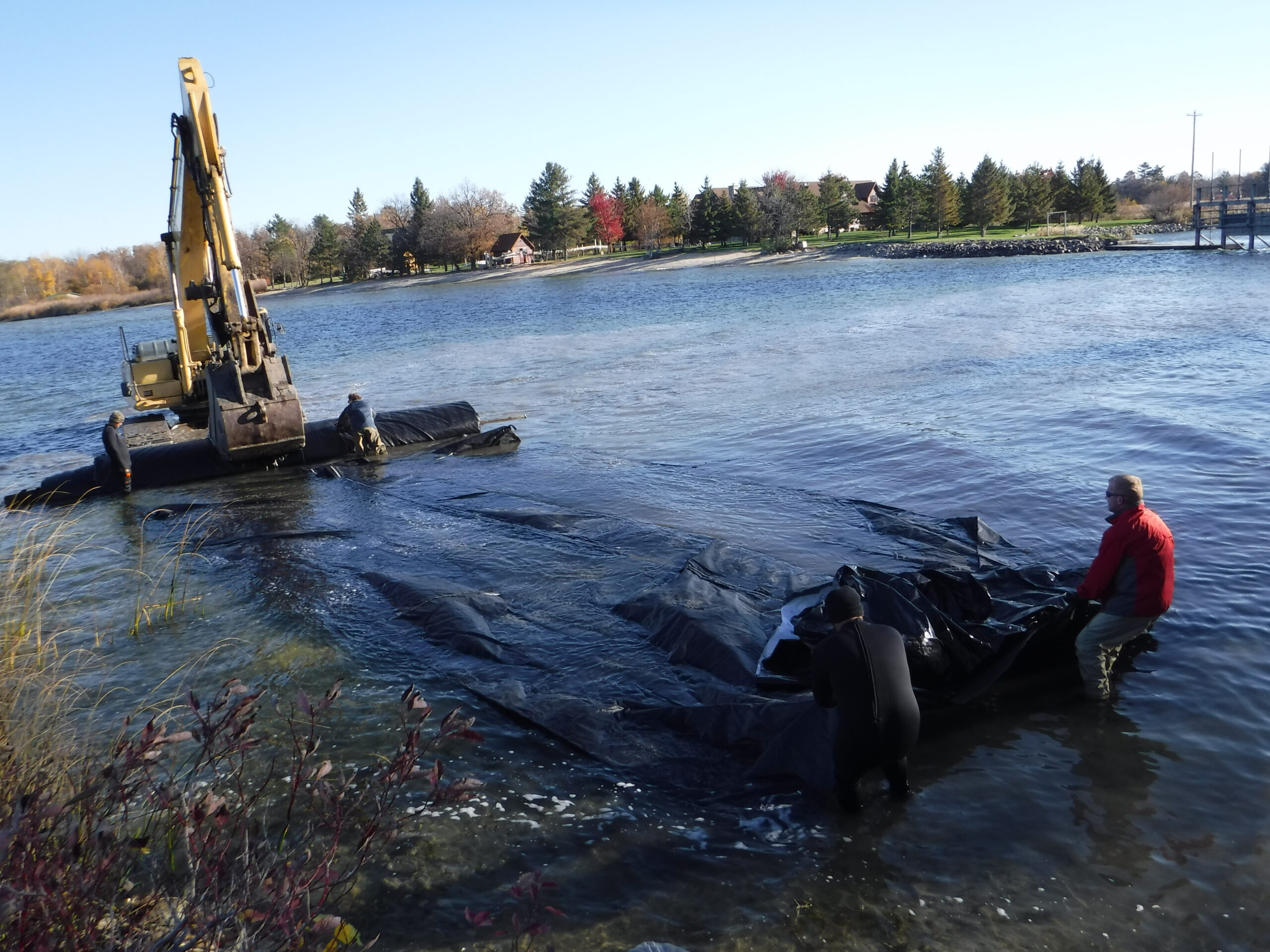
Workers willing to get wet must be available to help get the job done.
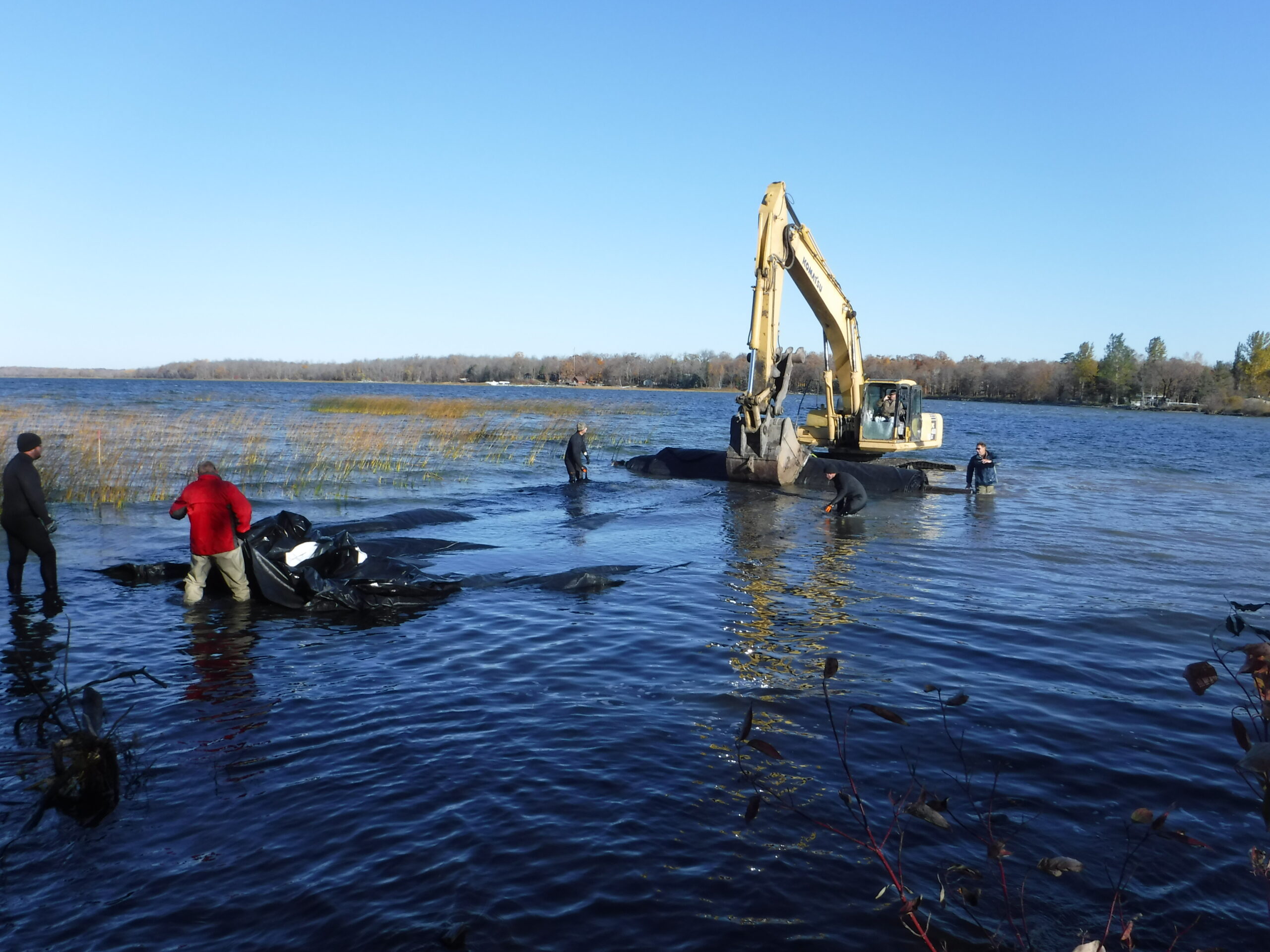
There is almost enough rolled out for the workers to pull the AquaDam® up the starting bank.
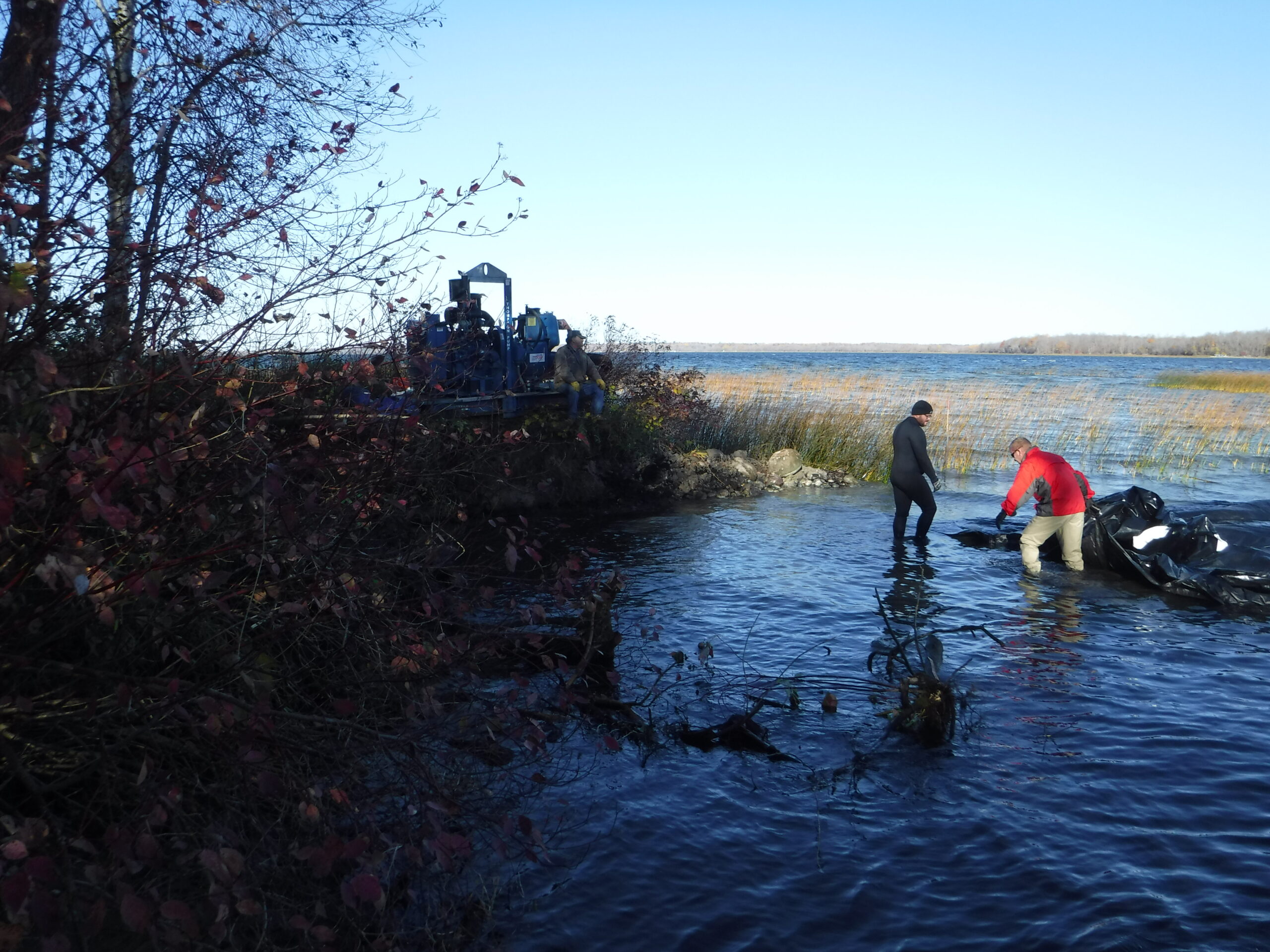
The AquaDam® will need to be moved roughly 50ft to the left in this photo.
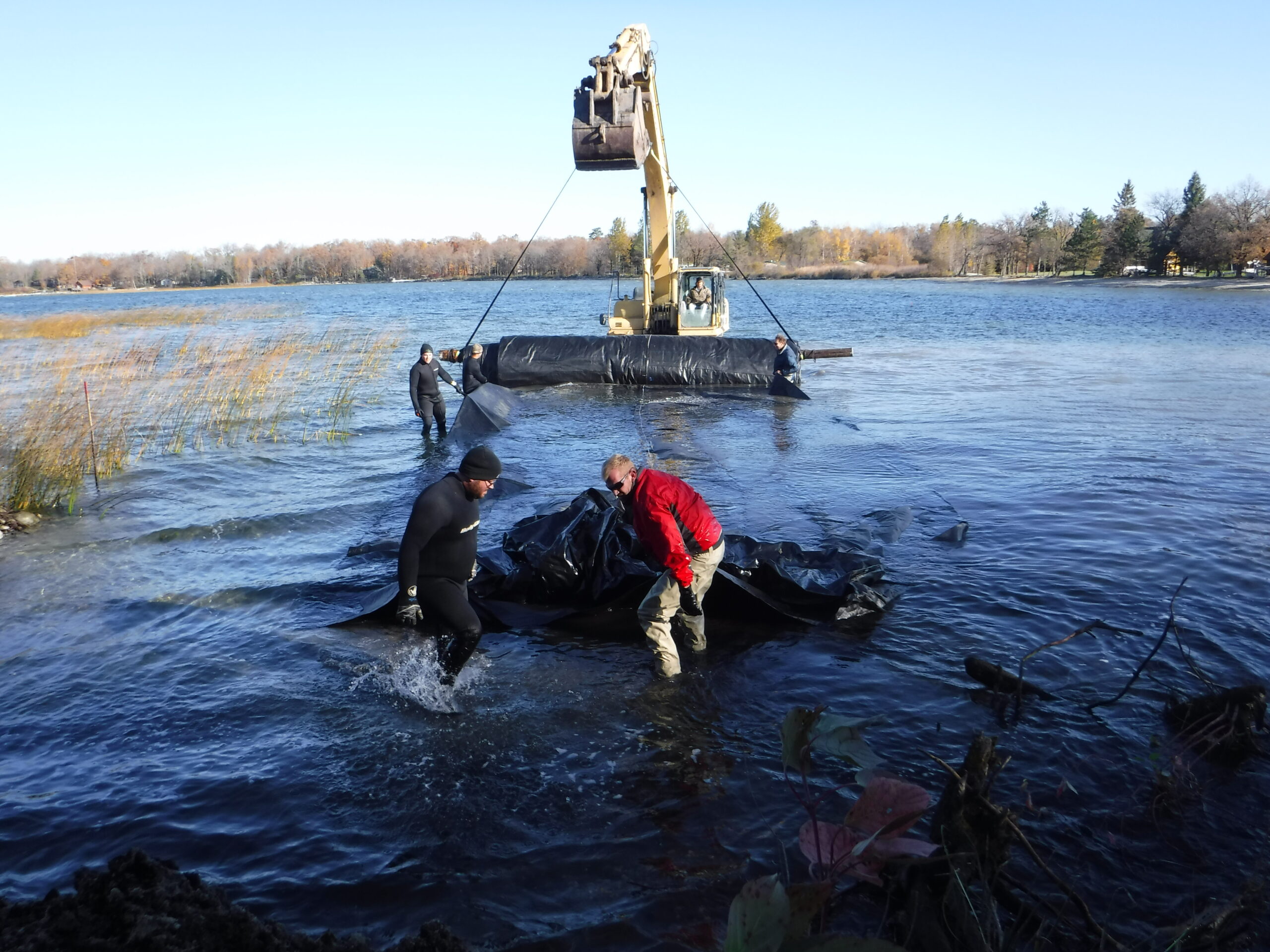
The excavator was able to lift and pull the roll while workers pulled the material towards the starting bank.
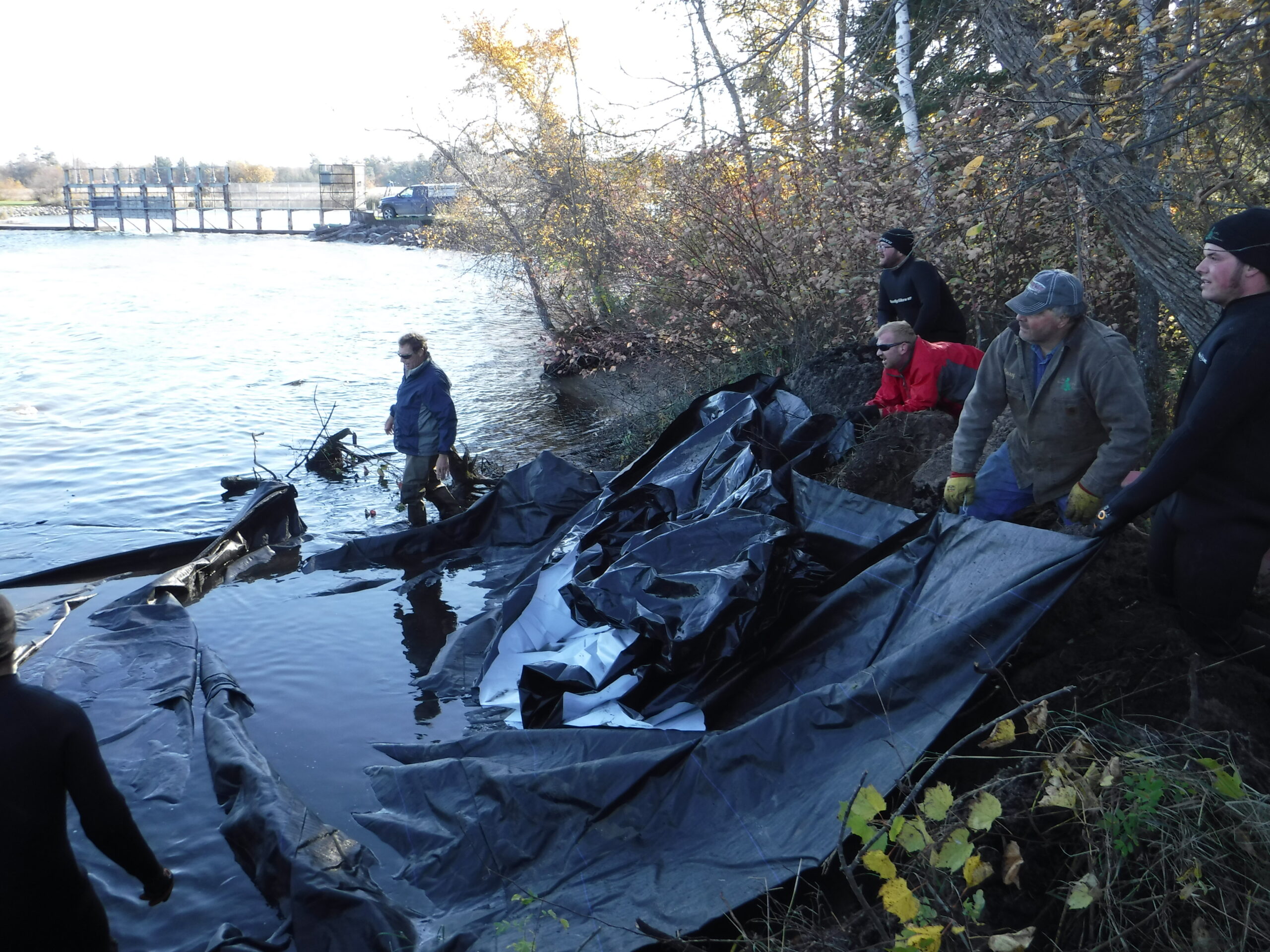
Workers are getting the starting point of the AquaDam® ready to fasten to anchors (trees) located at the starting bank.
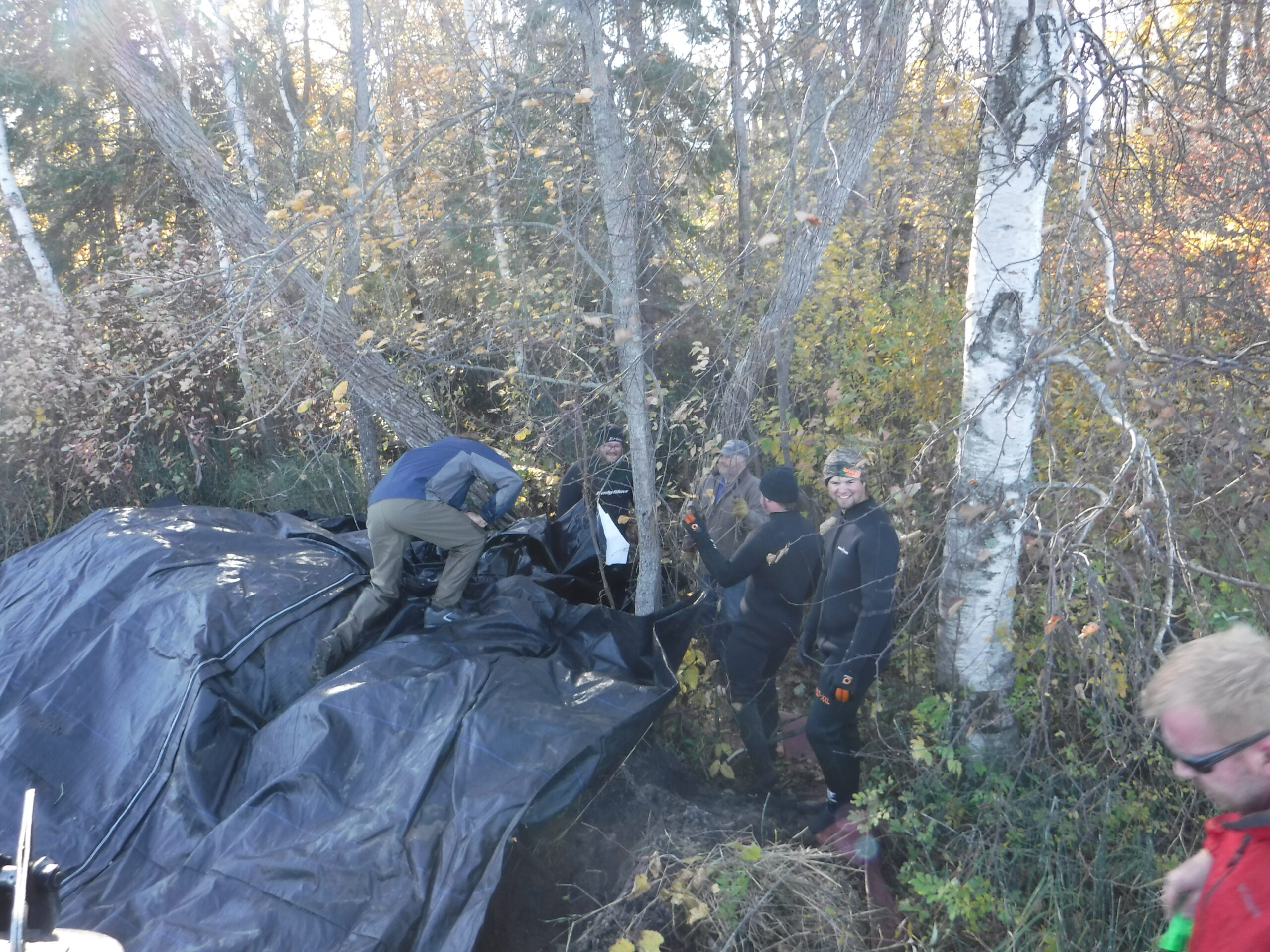
Now that enough material has been pulled up onto the starting bank, the fill-tubes can be prepared for filling.
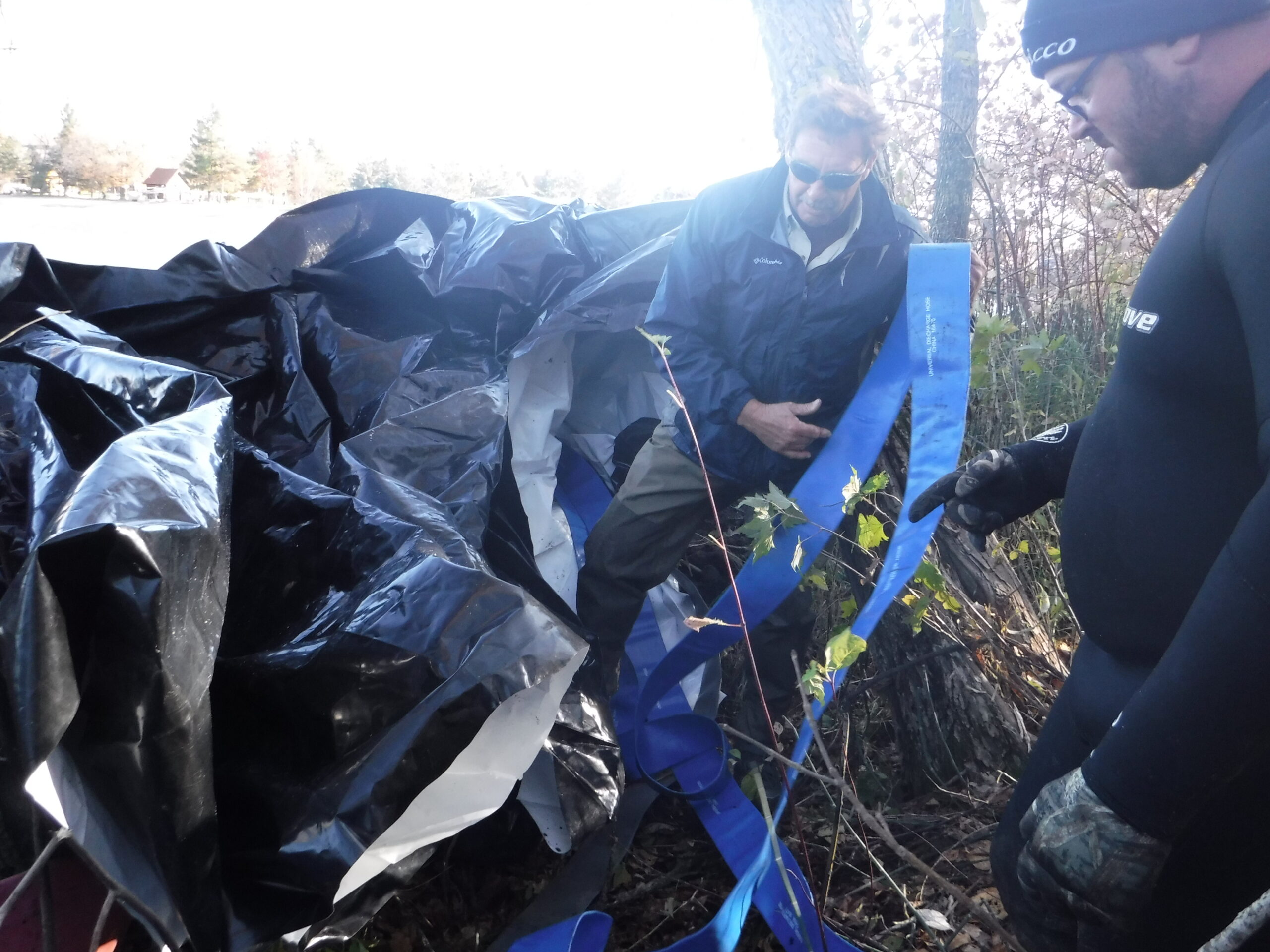
Blue 3in discharge hoses were place inside of the fill-tubes to fill the AquaDam.
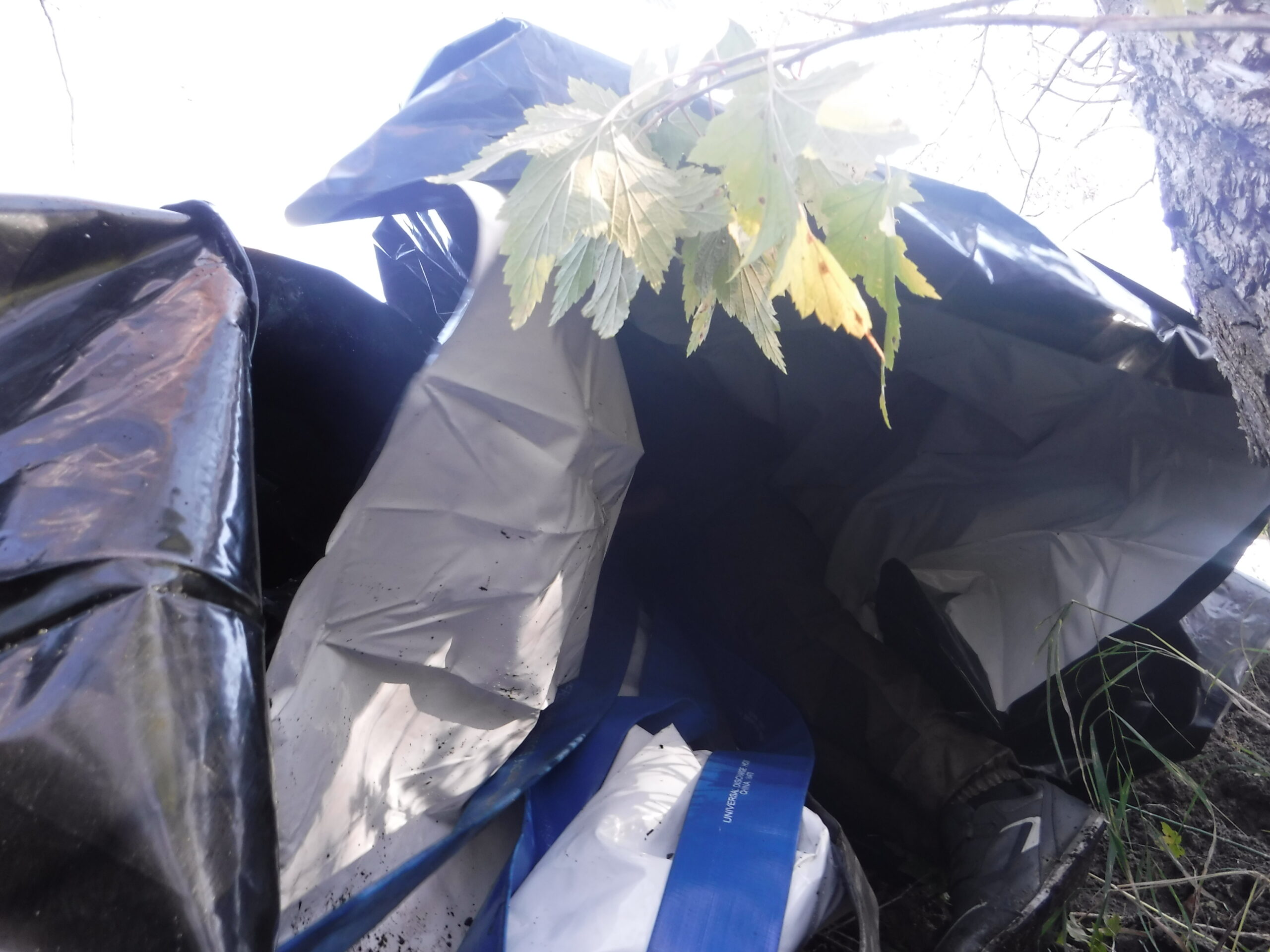
Enough length of the blue 3in discharge hoses needs to be put into the fill-tubes to reach down the starting bank.
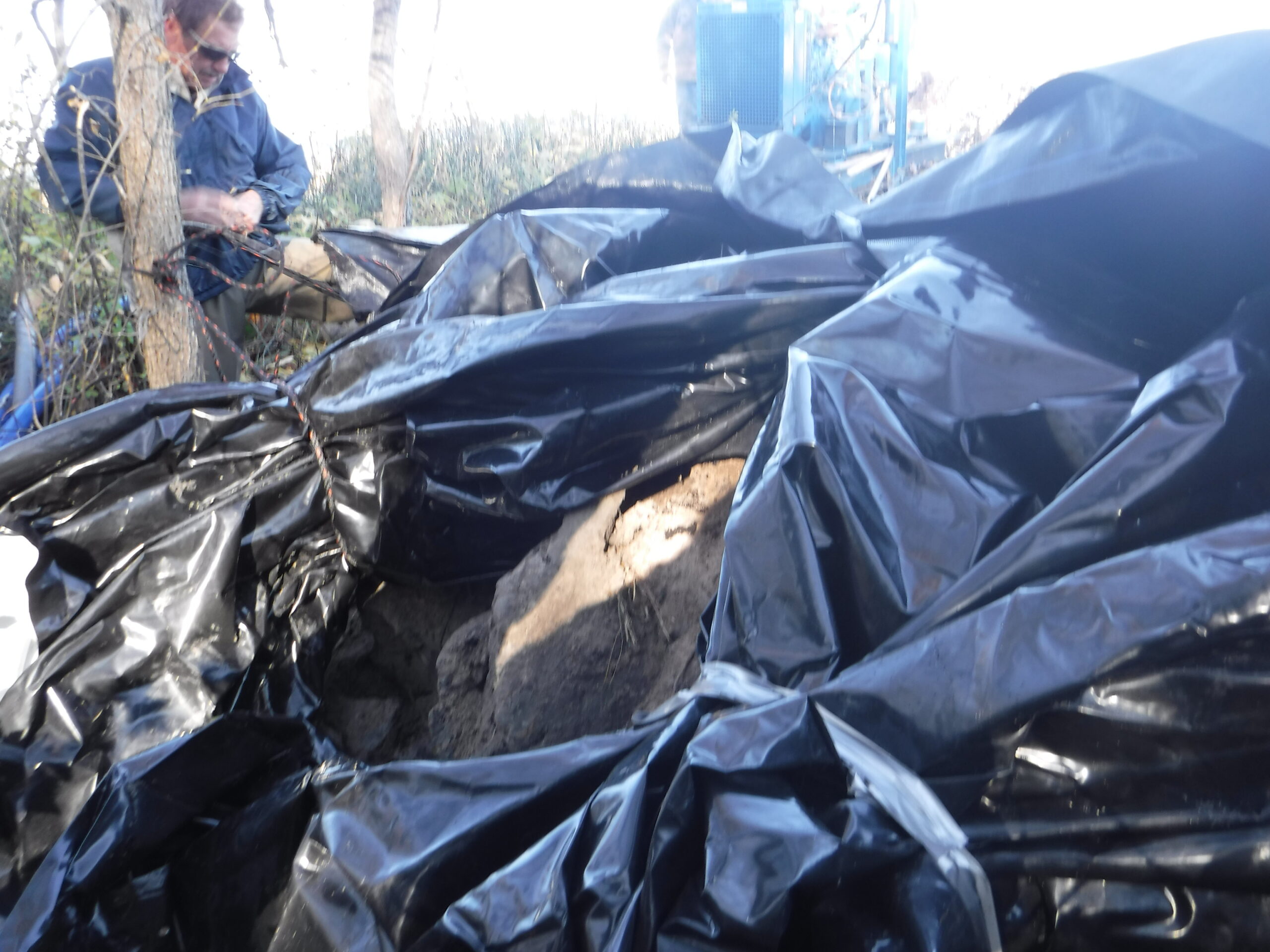
After the blue 3in discharge hose have been placed, the fill-tubes should be wrapped and secured to refrain the discharge hose from moving too much or exiting the fill-tubes.
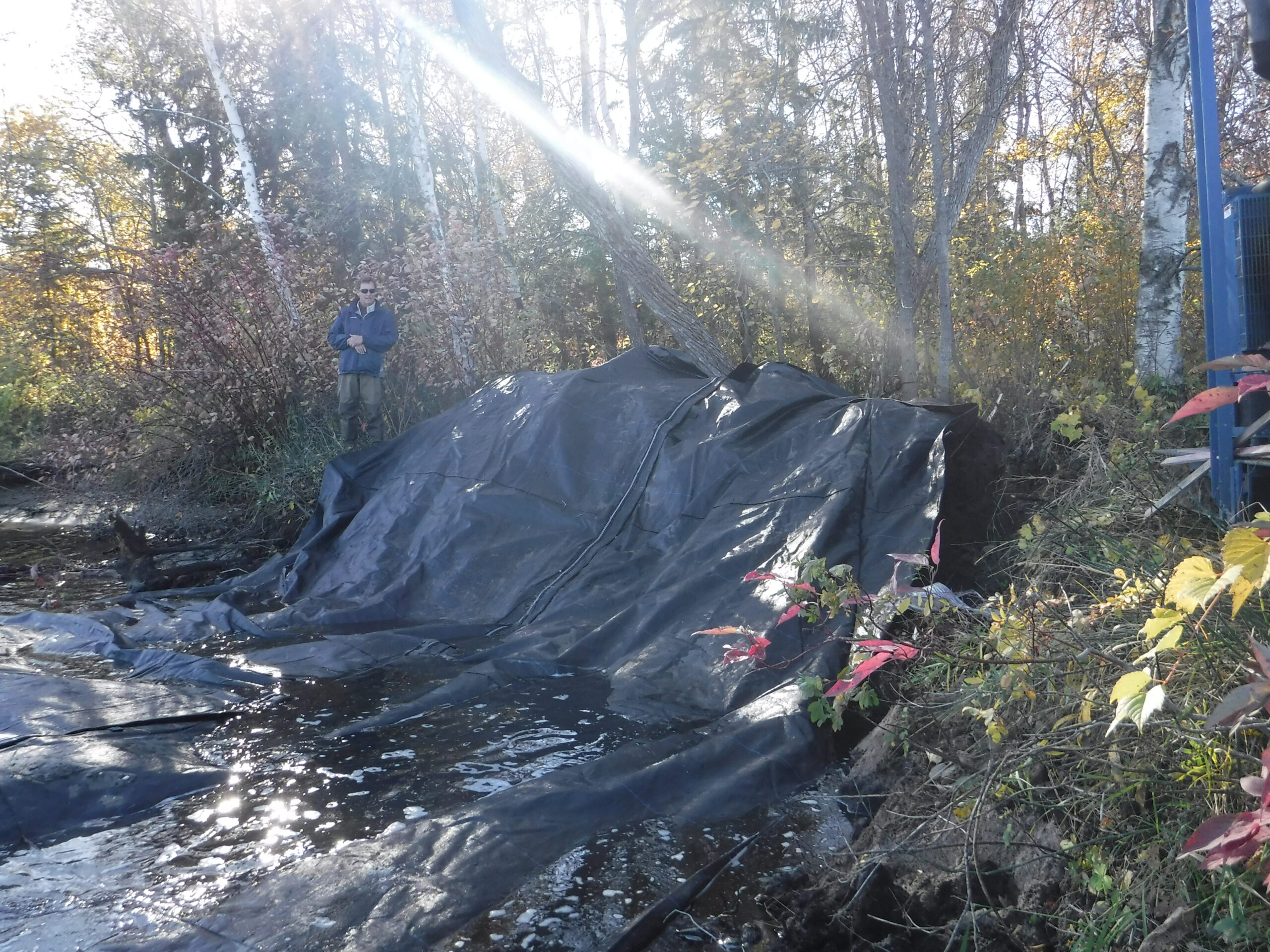
What a great looking starting bank for an AquaDam.
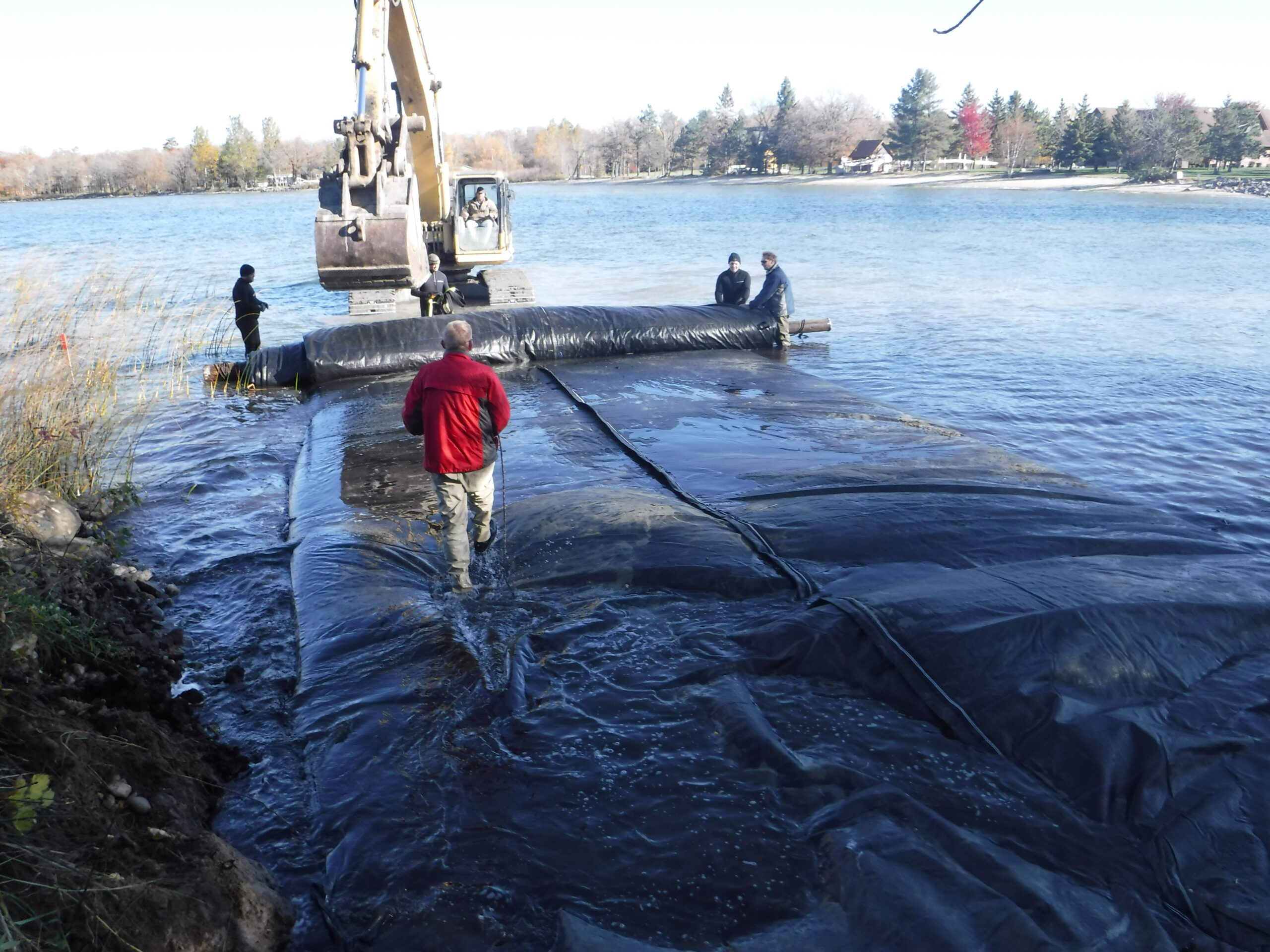
After pumping begins, the AquaDam® will gain head above the surrounding water and begin to un-roll.
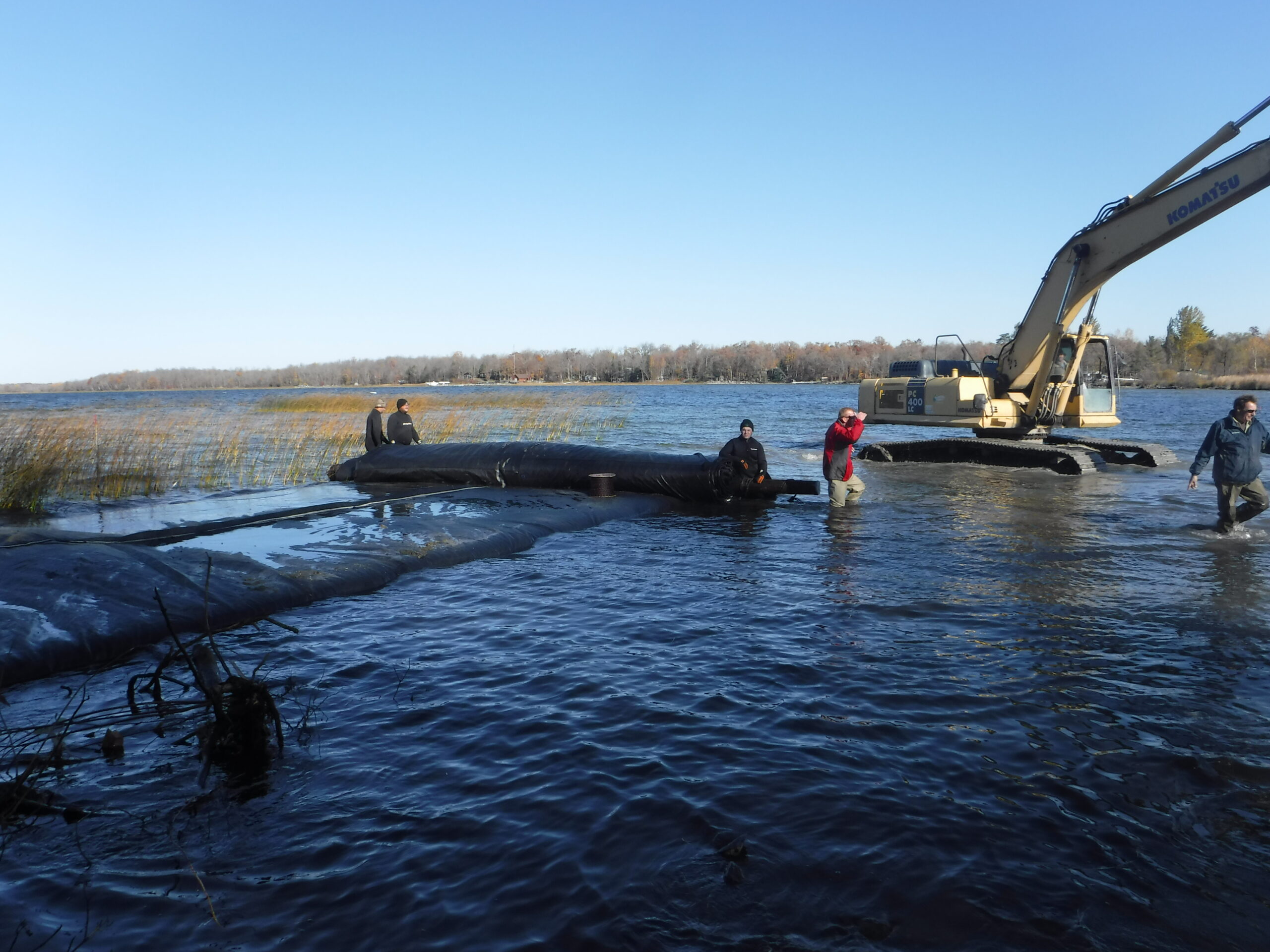
The excavator can now get out of the water and help from shore.
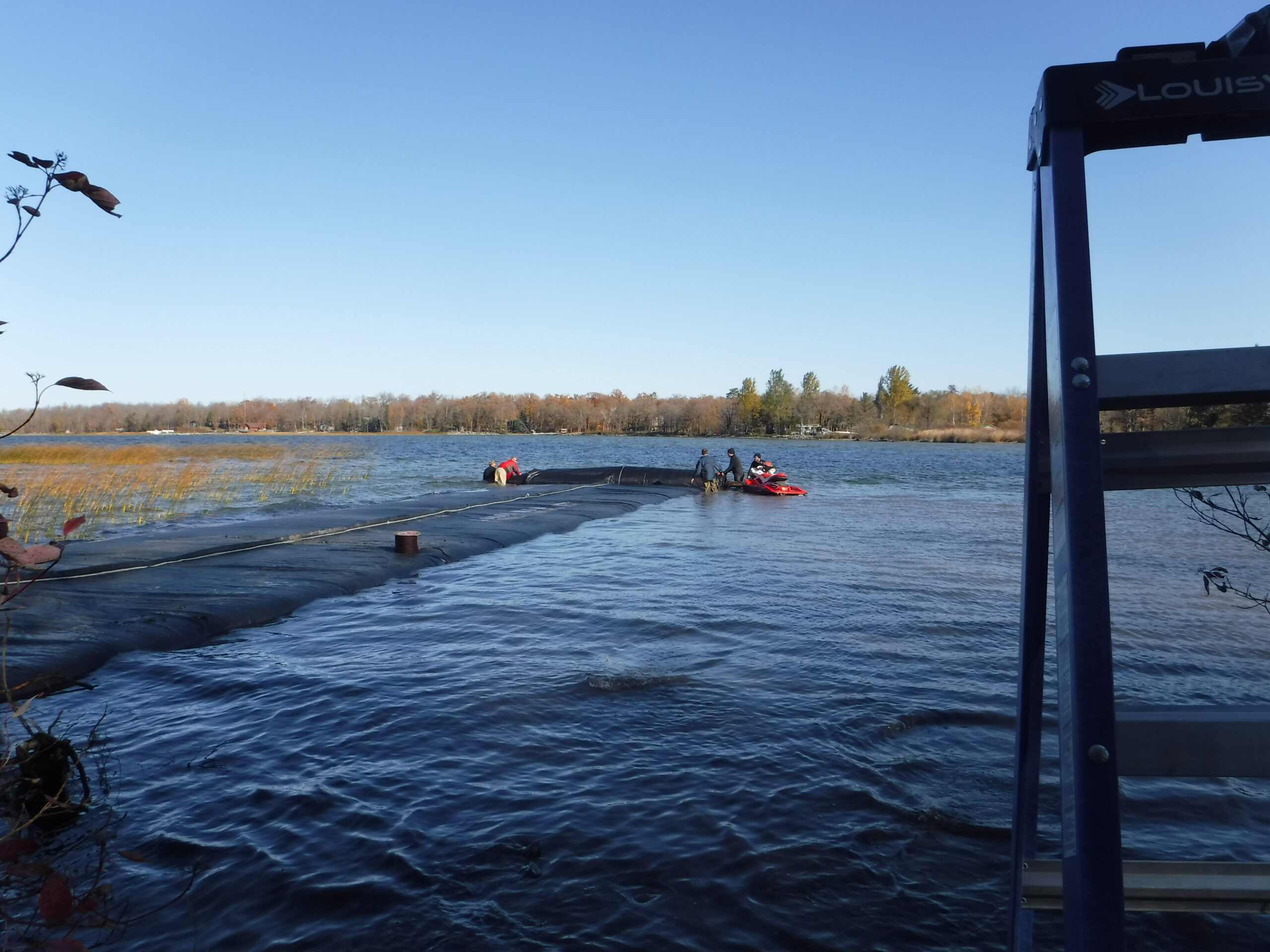
Non-propeller personal water craft works best with an AquaDam.
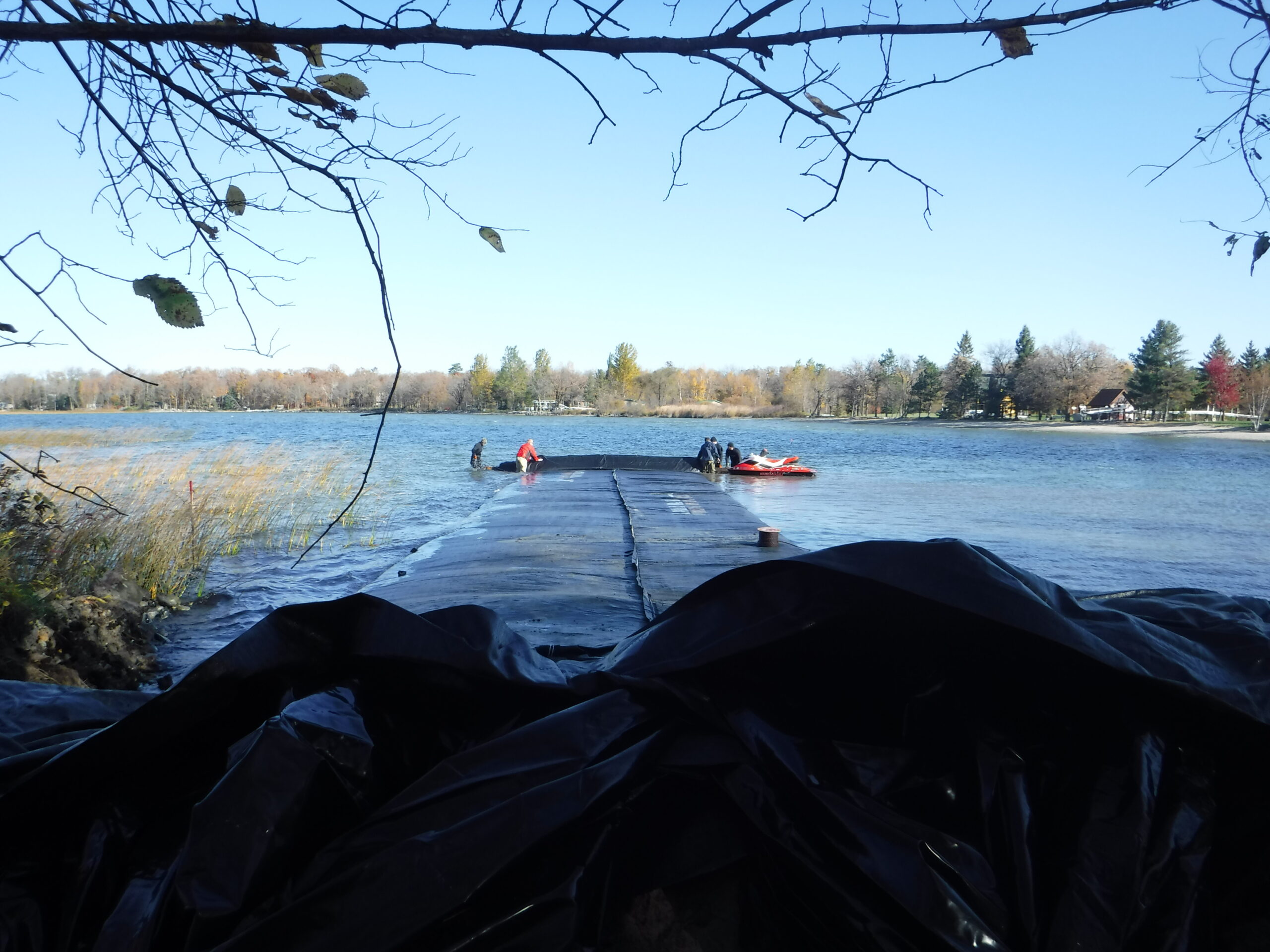
The AquaDam® is slowly gaining head above the water and un-rolling towards the intended path.
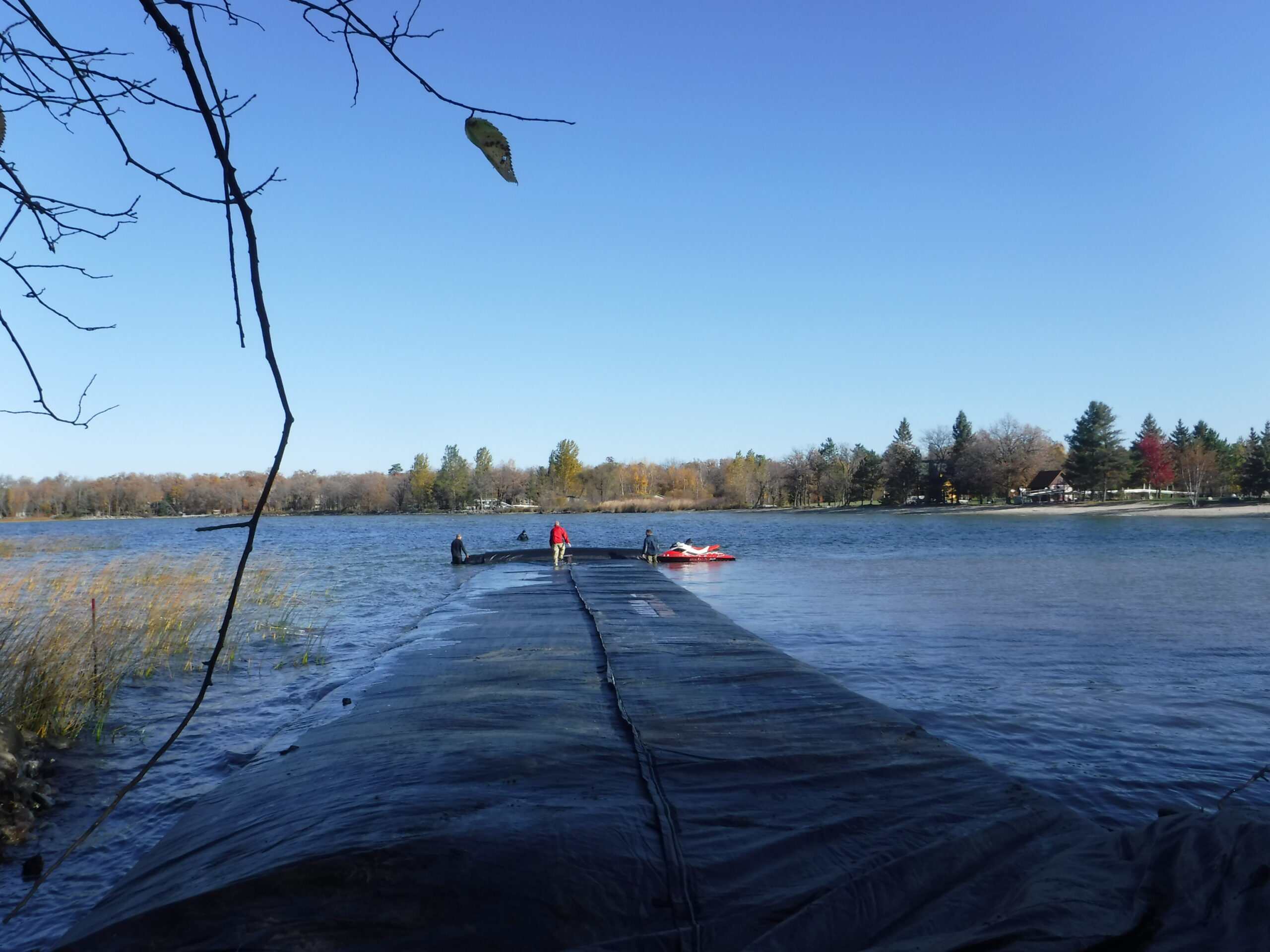
Once the AquaDam® has head above the water, the unit becomes much like a platform.
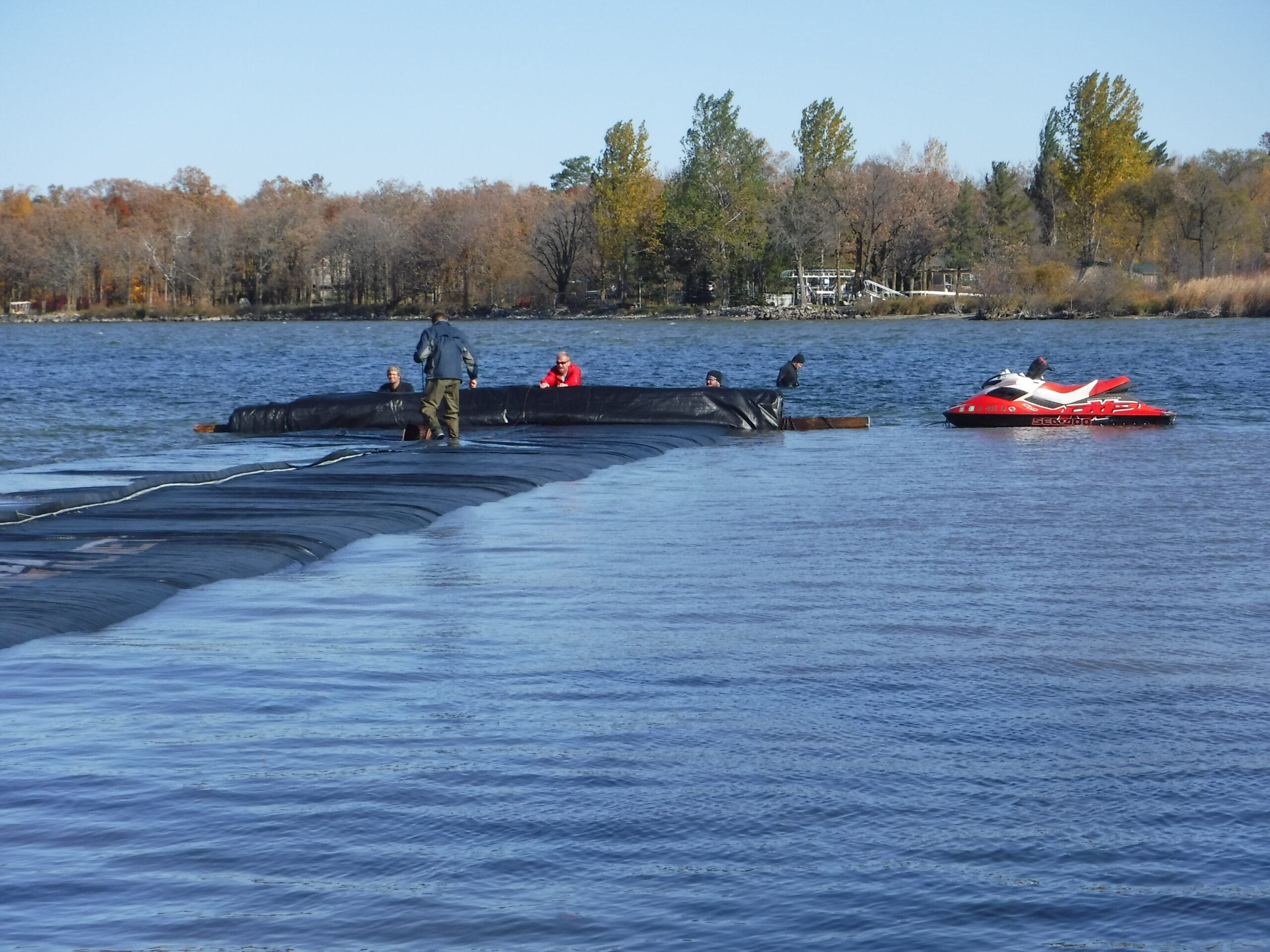
Pressure can be applied to the roll of the AquaDam® to prevent the unit from un-rolling. This pressure will allow the unit to build head above the water.
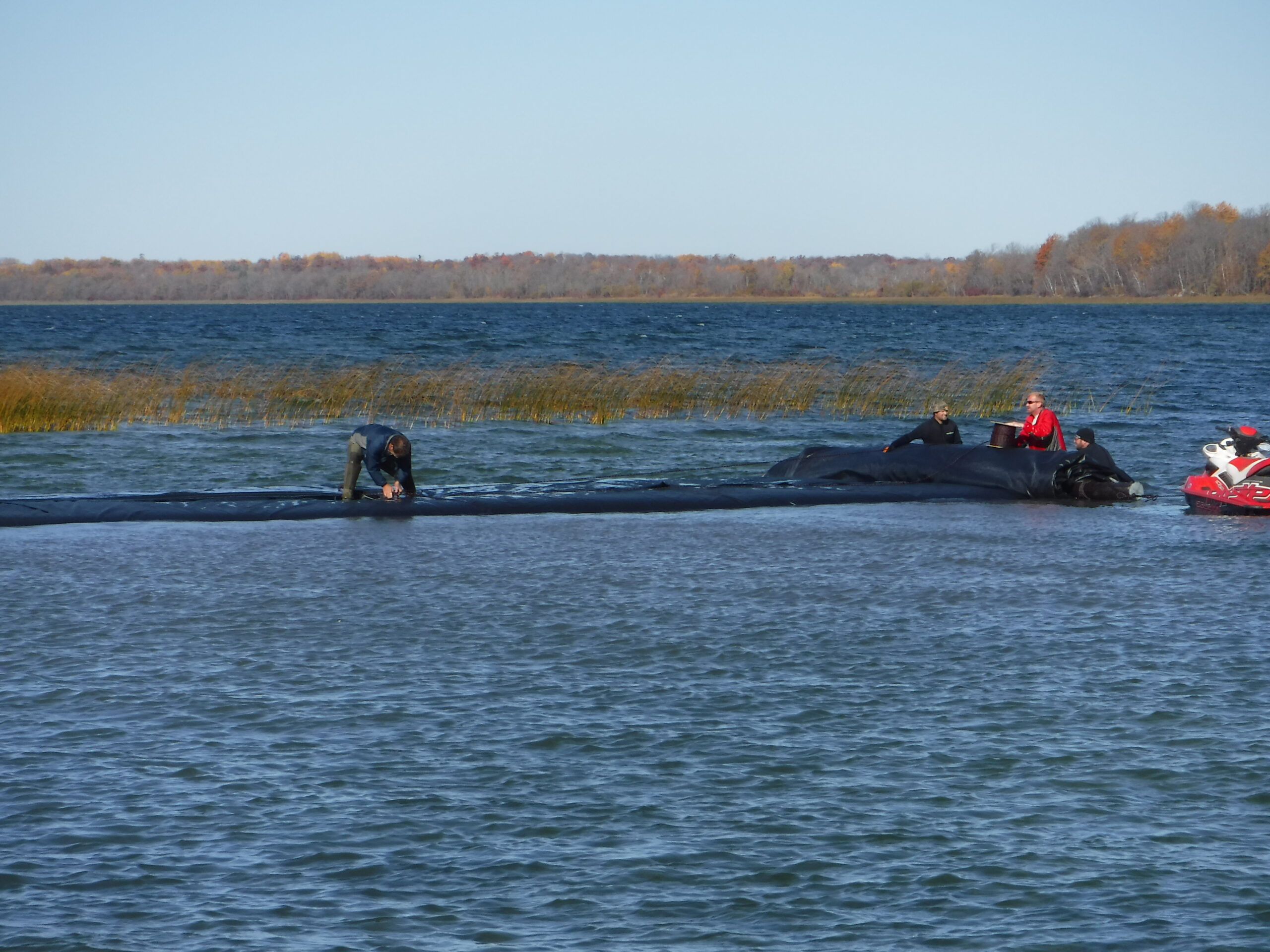
Ropes can be tied onto the outer layer of an AquaDam® to help the unit turn and gain head.
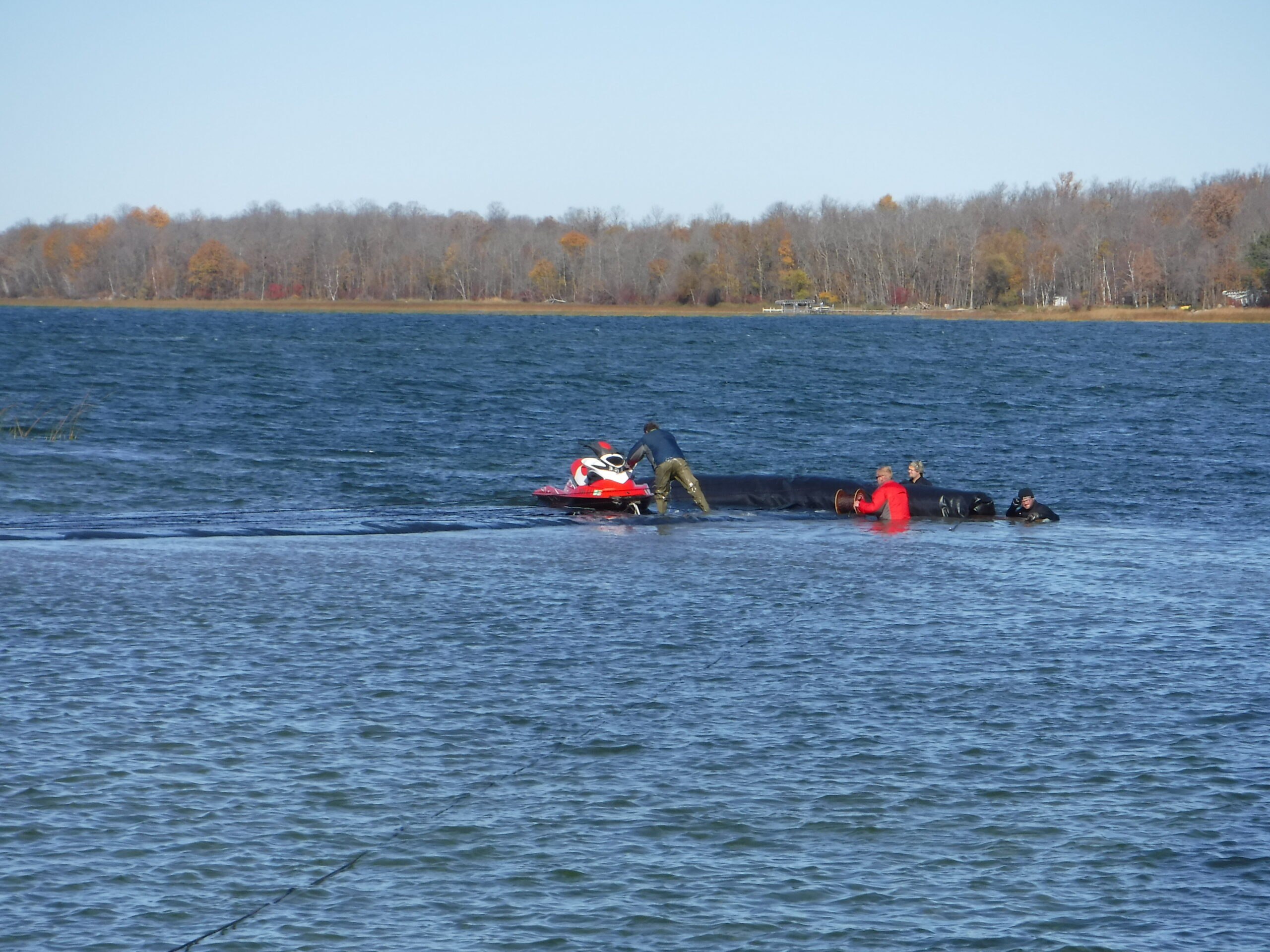
Jet skis can go right on top of an AquaDam.
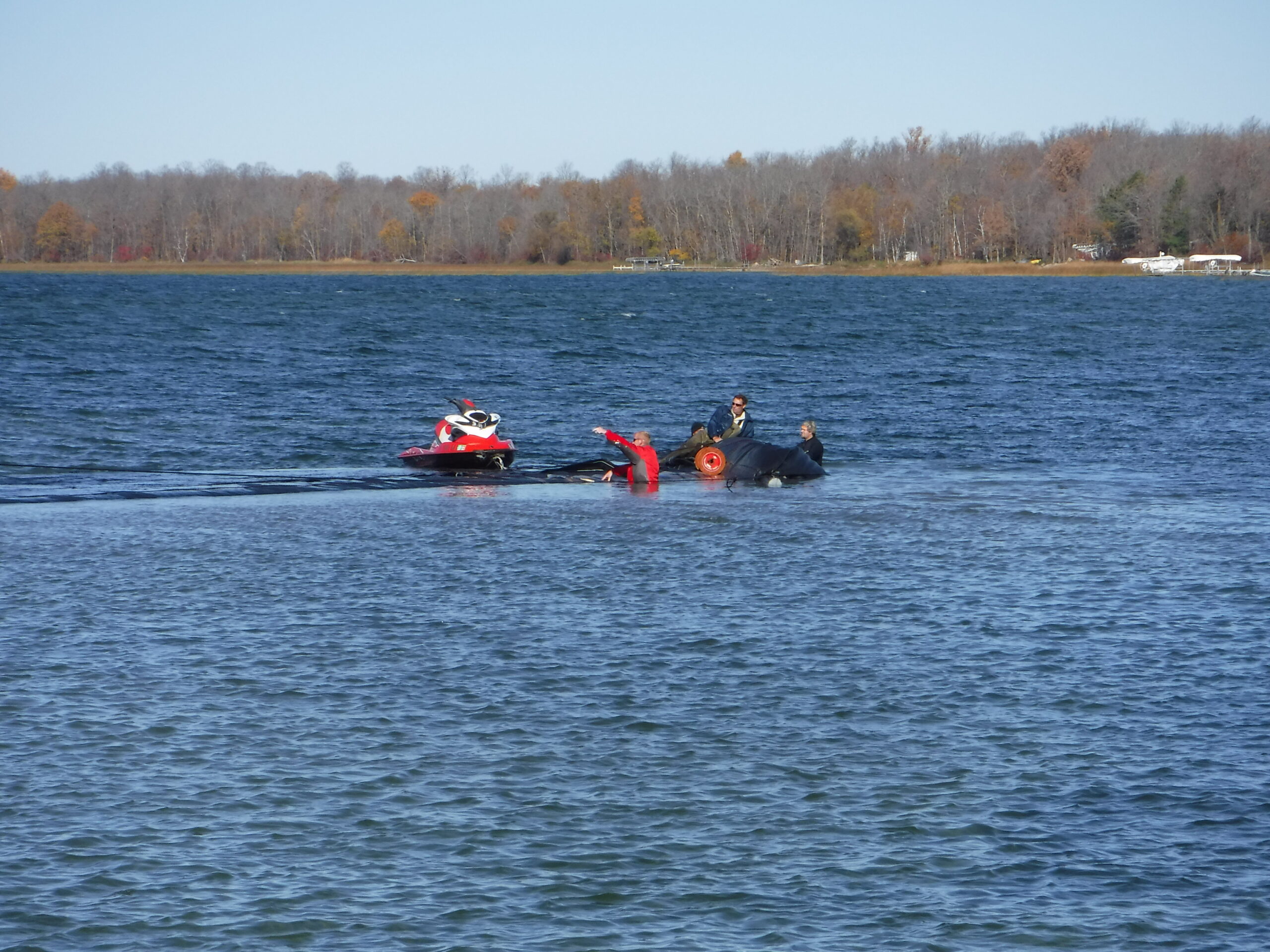
Turns should be planned out and the inside of a turn may need pleating.
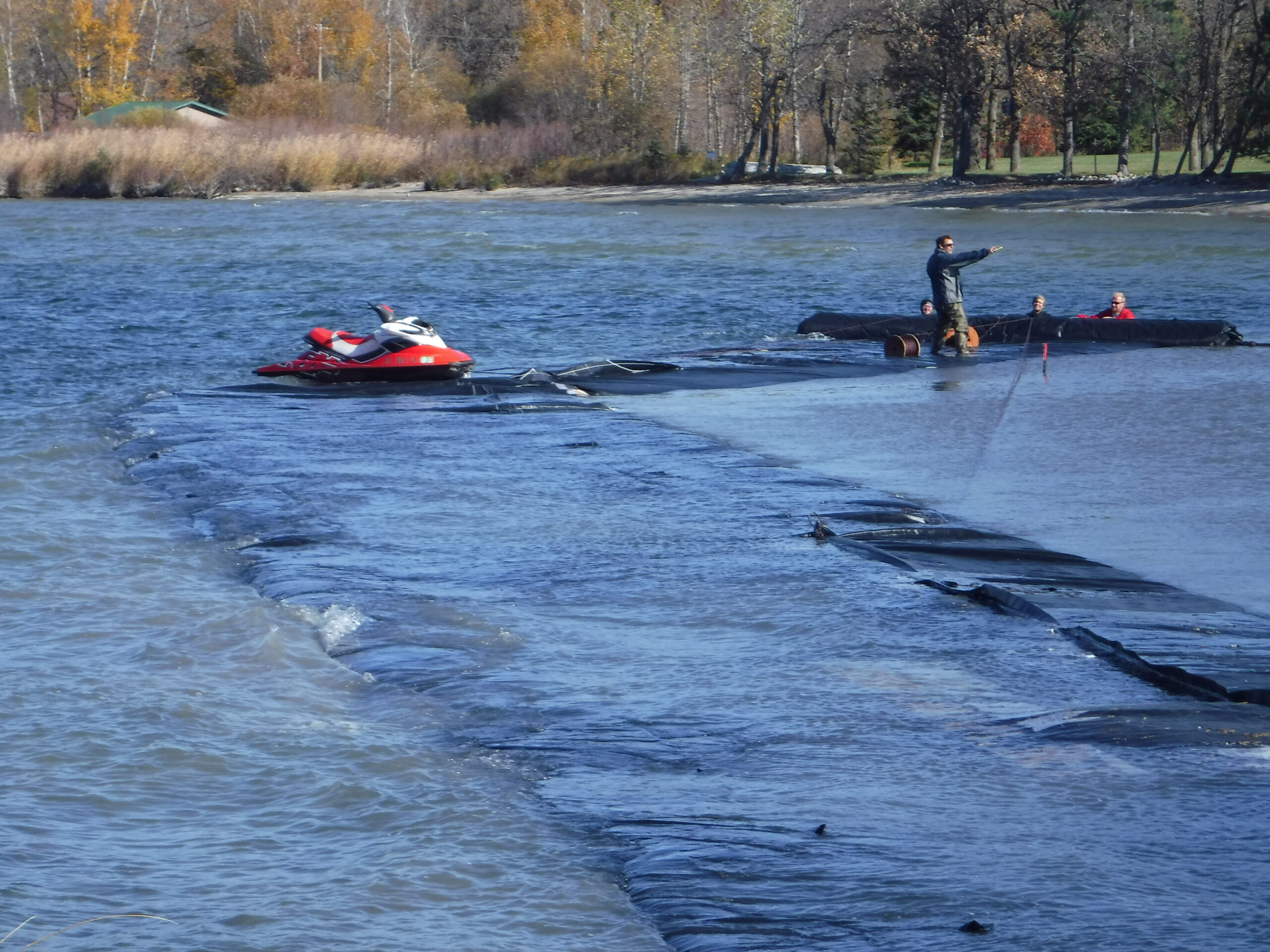
The 8ft tall AquaDam® has made it's first turn and is now headed toward the next proposed location as the unit continues to fill. Notice the difference between the water on the outside and inside of the AquaDam.
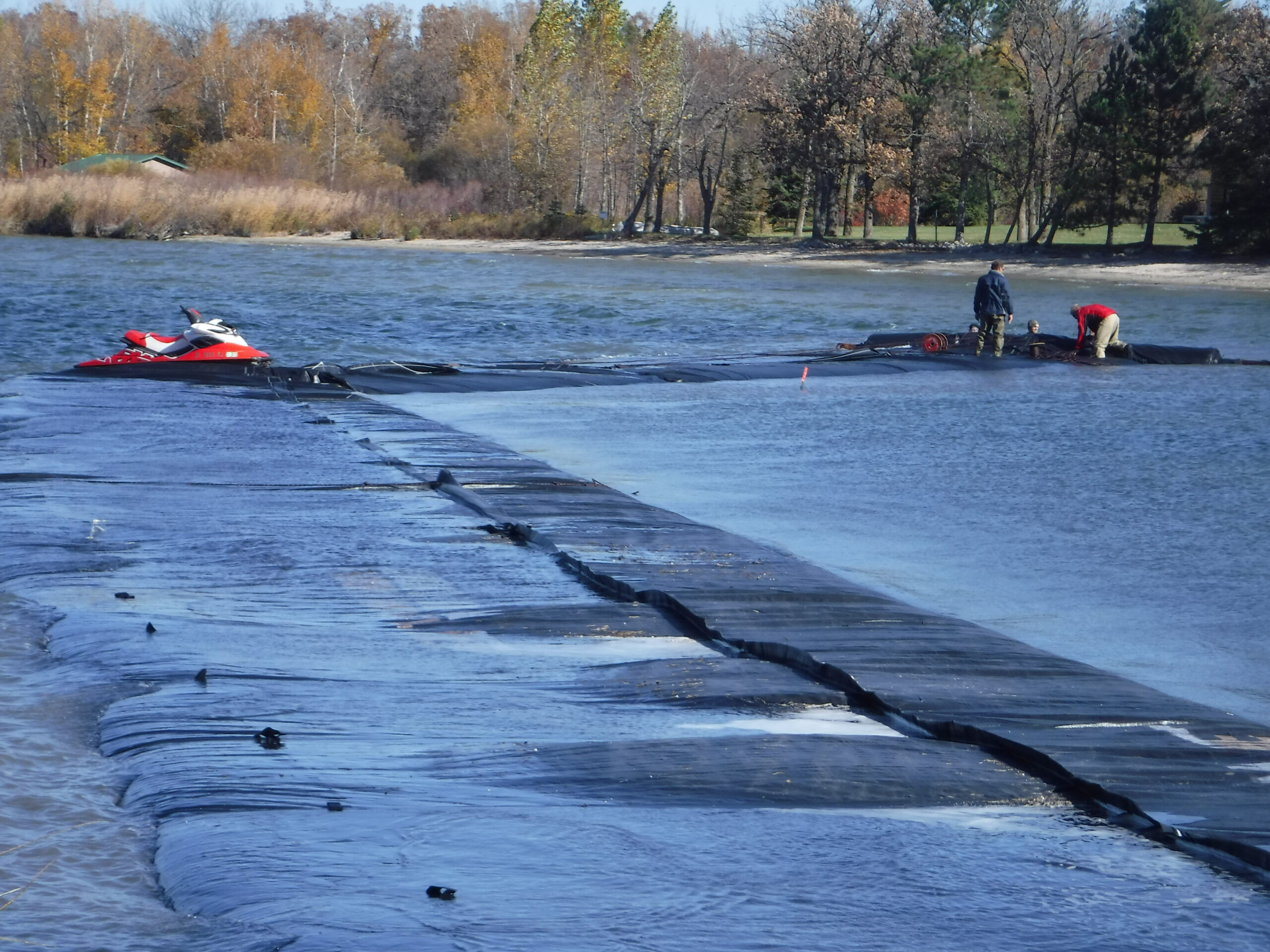
Workers are getting prepared for the next turn. Pressure will be applied by workers and ropes (attached to the AquaDam) to aid the filling AquaDam® in making the desired turn.
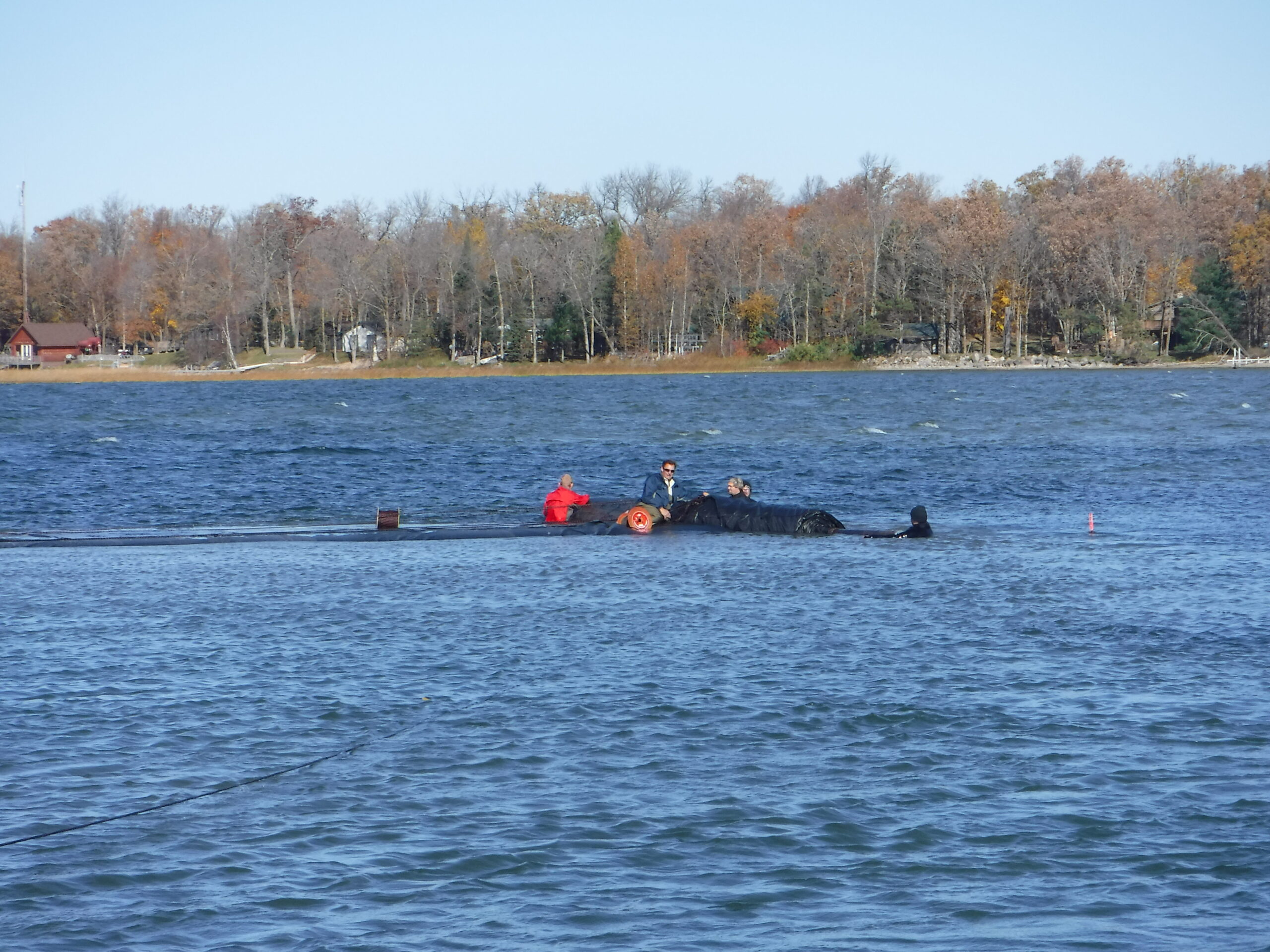
The next turn is coming up. Notice the flag sticking out of the water to the right of the AquaDam® and workers.
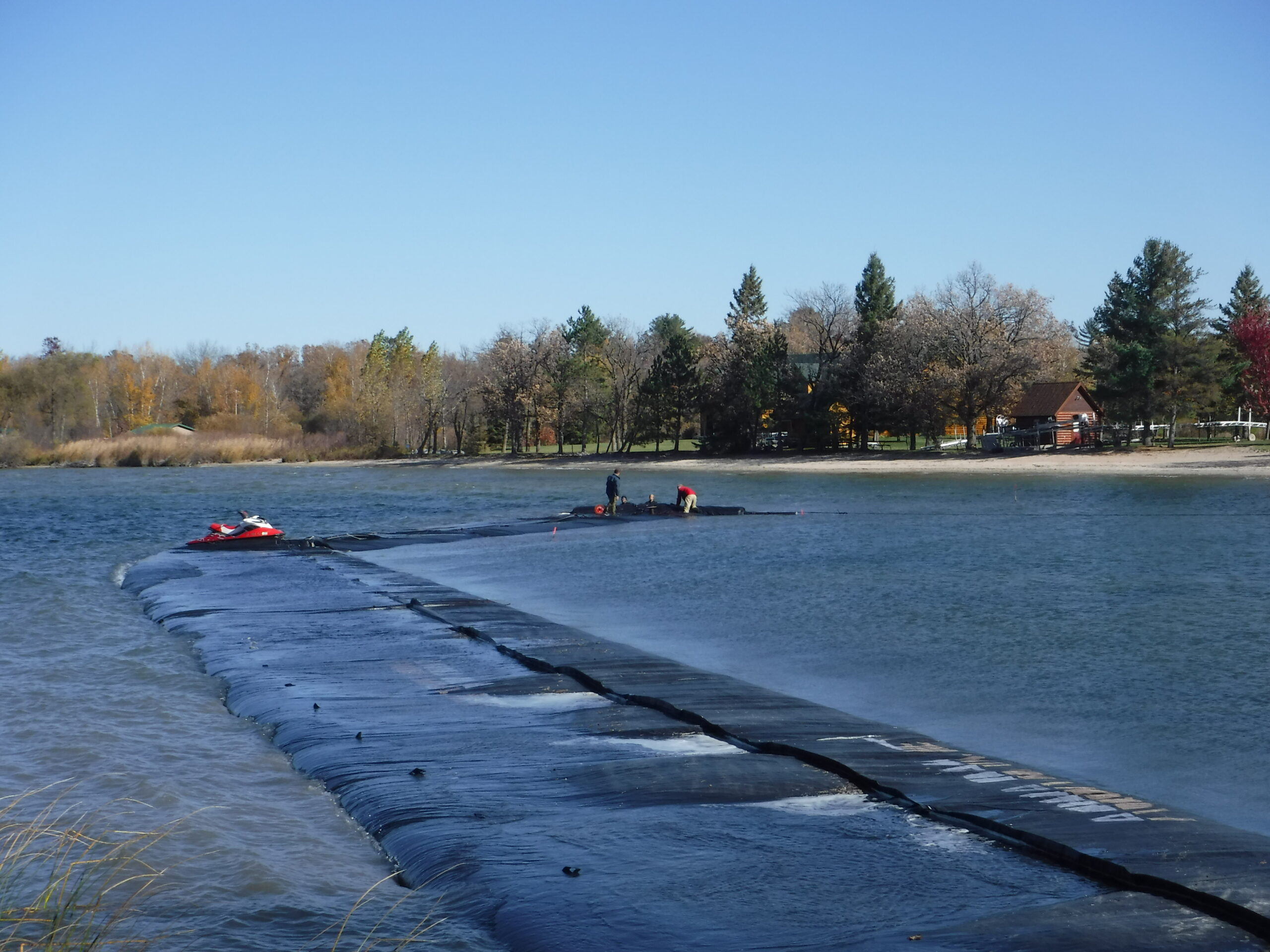
A rope has been fasten to the log (in the center of the AquaDam) and the excavator (on shore) to help pull the AquaDam® in a desired direction.
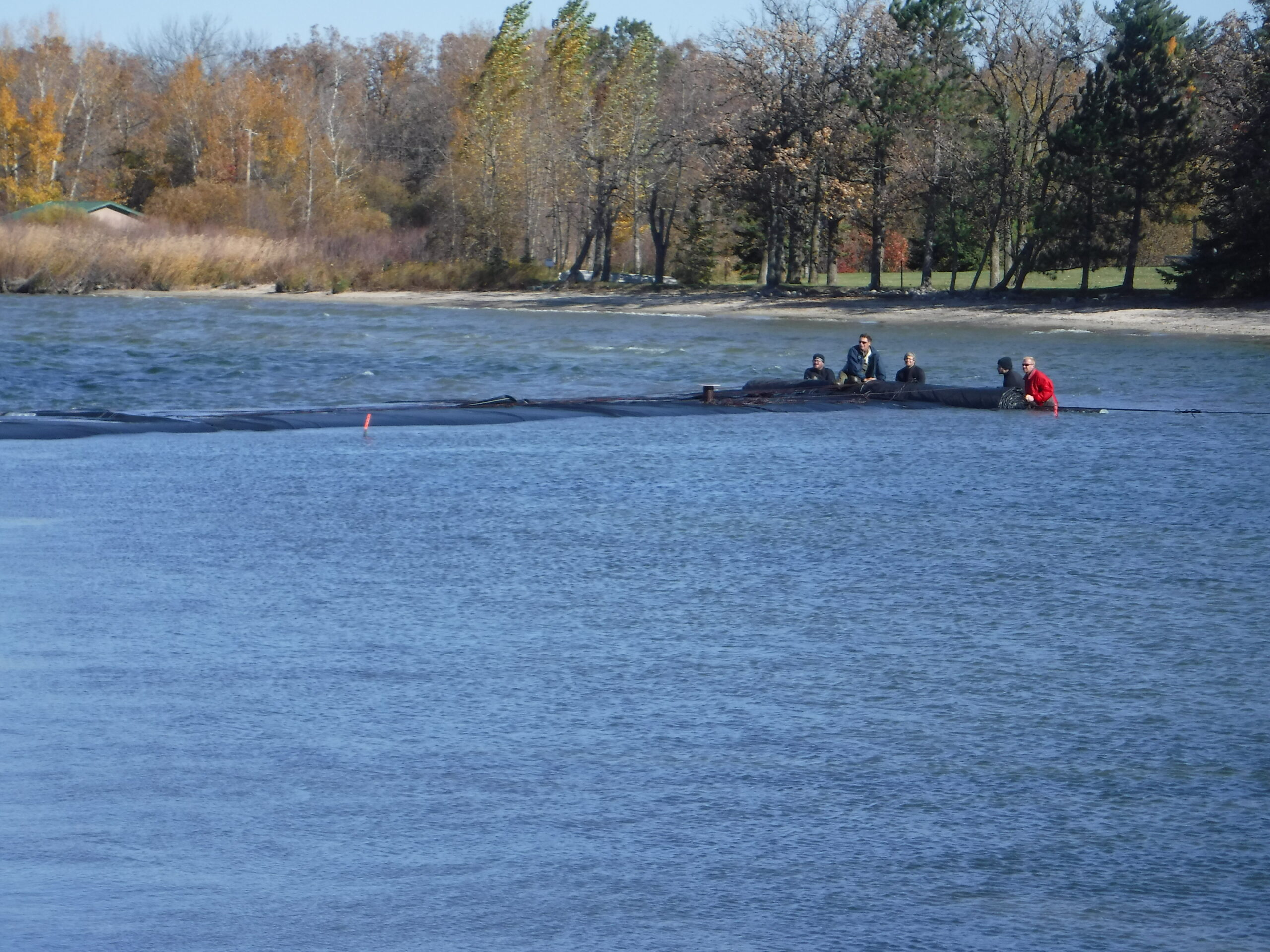
The AquaDam® is finally passing the second flag.
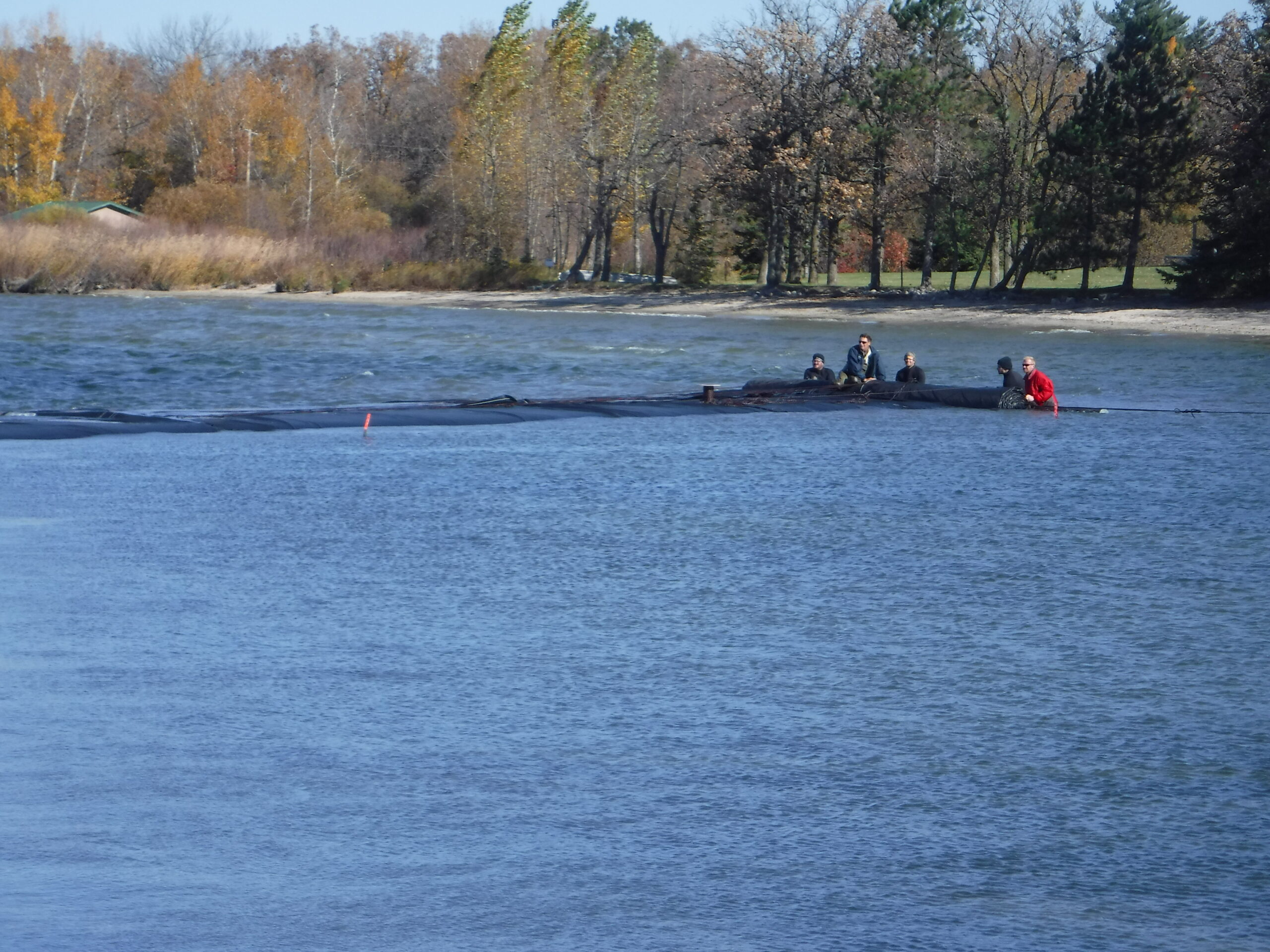
Now that the second flag has been passed, the workers and ropes are doing a great job at keeping the AquaDam® along the desired path.
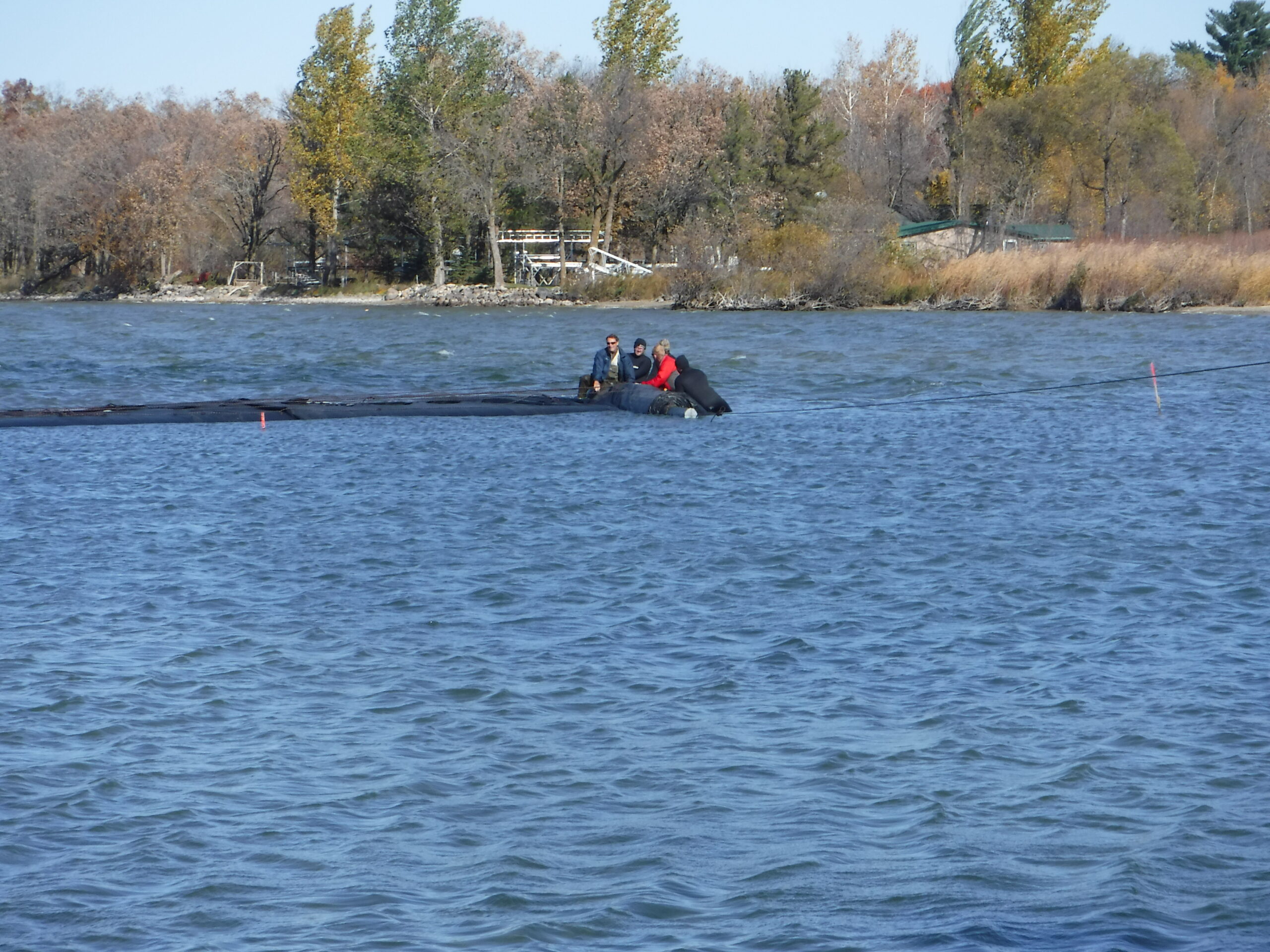
The third flag can be seen in the far right of this photo. The water appears to be getting less deep again.
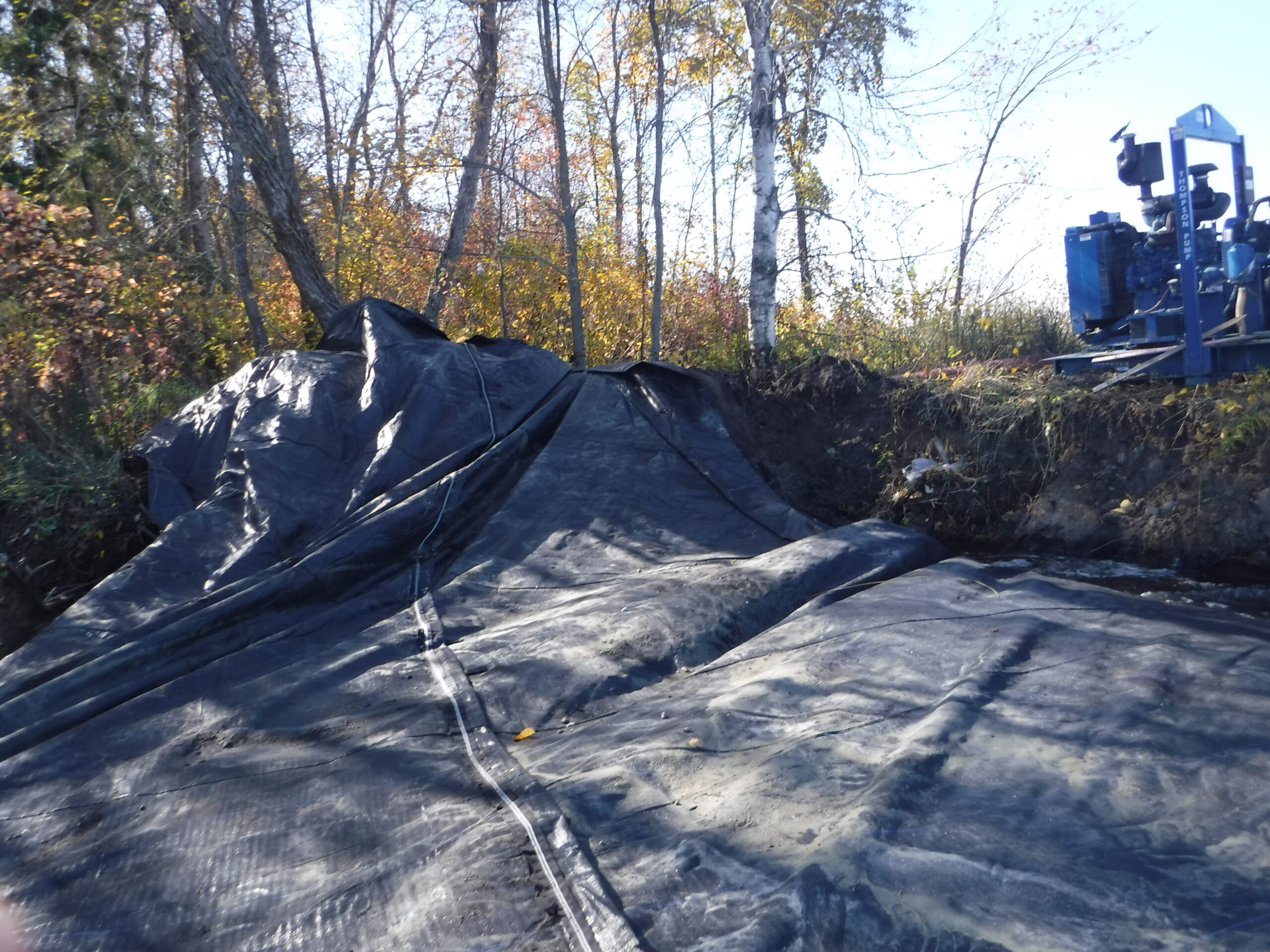
The starting point of this AquaDam® is elevated several feet, which allows all the water to stay inside of the AquaDam.
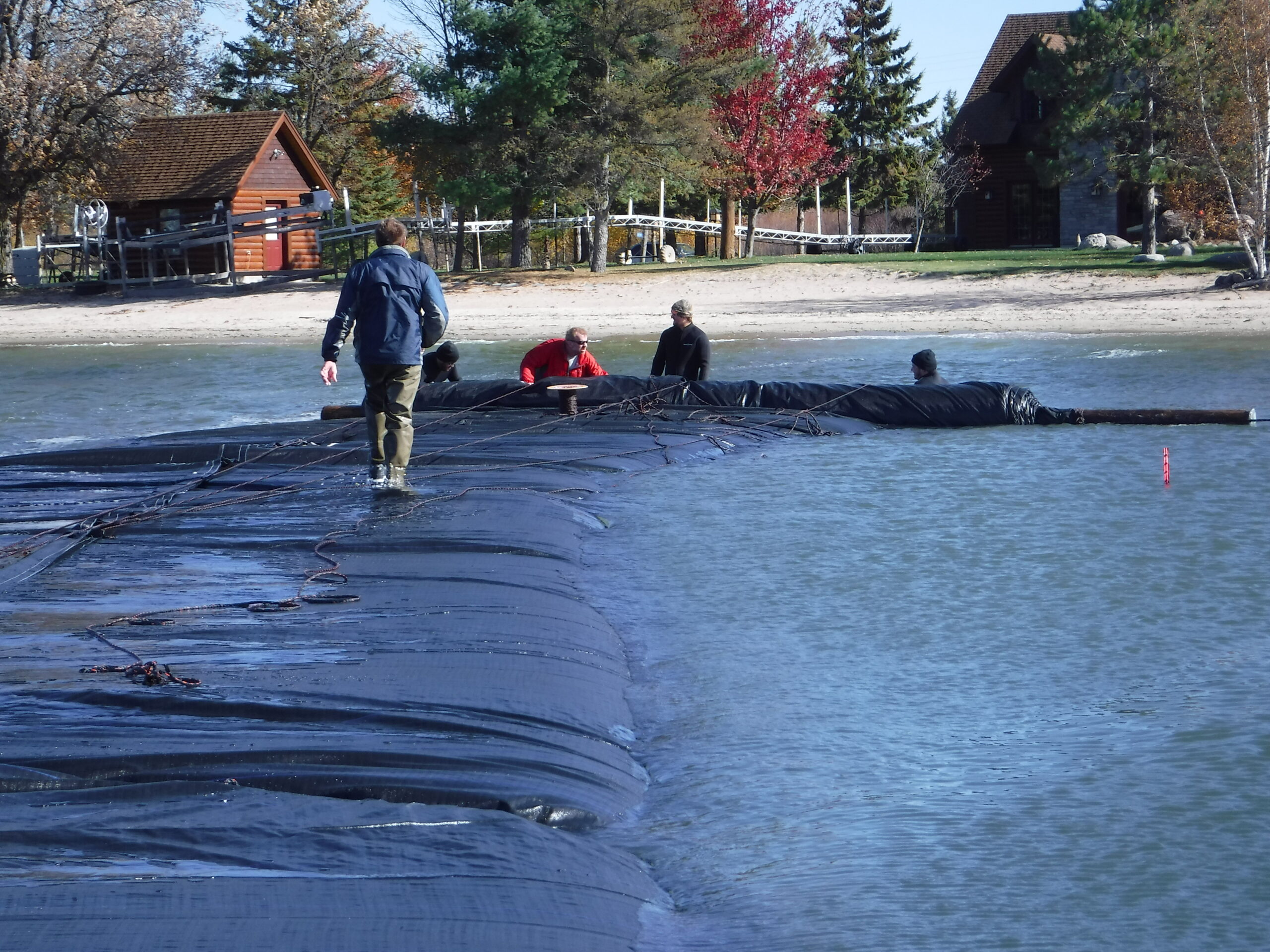
Multiple ropes have been tied to the AquaDam® to allow the unit to gain head (above the water) as it make it's way to the ending bank (shore).
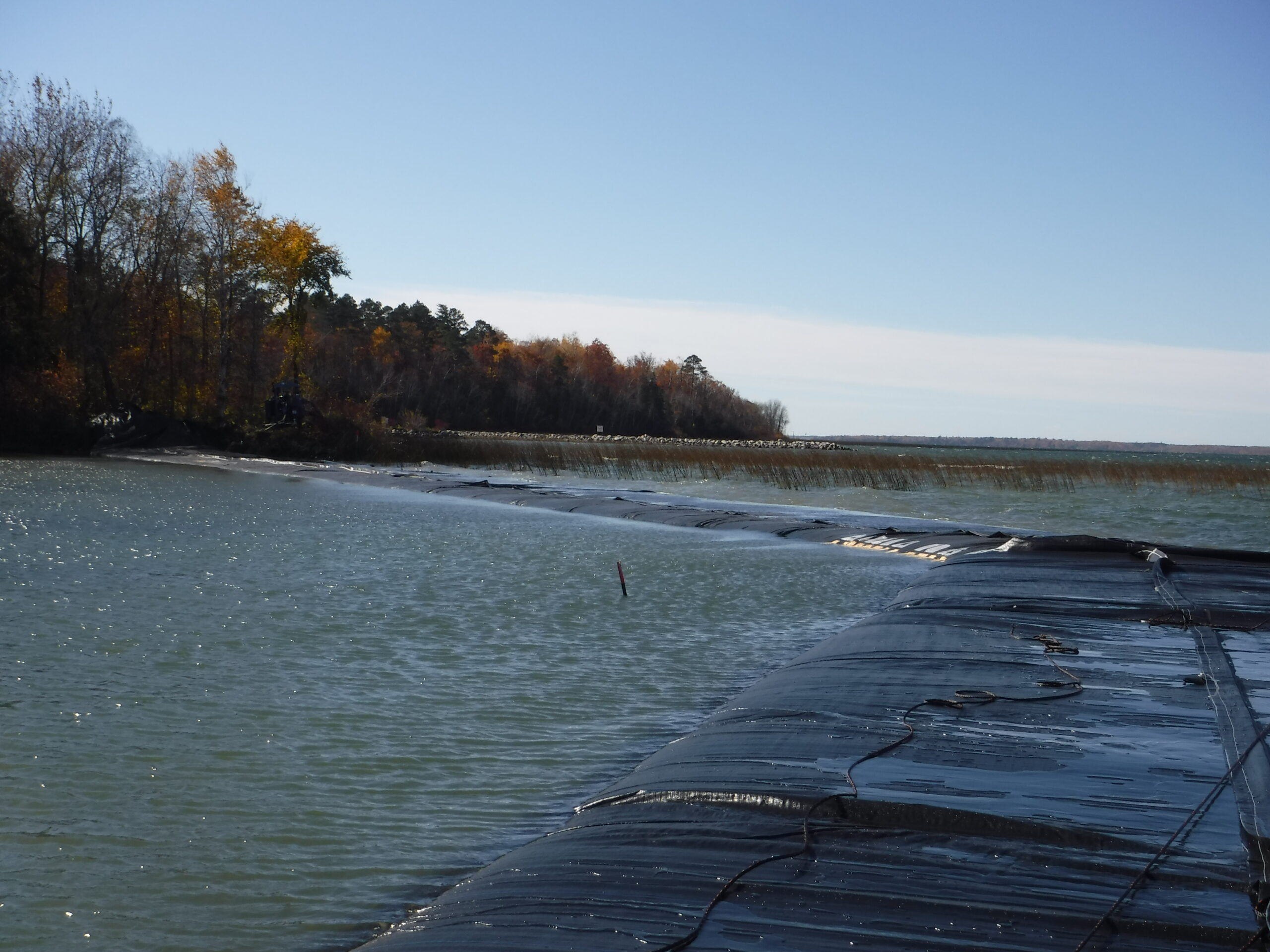
This 8ft tall 450ft long SCE AquaDam® is continuing to fill and has almost reached the ending bank.
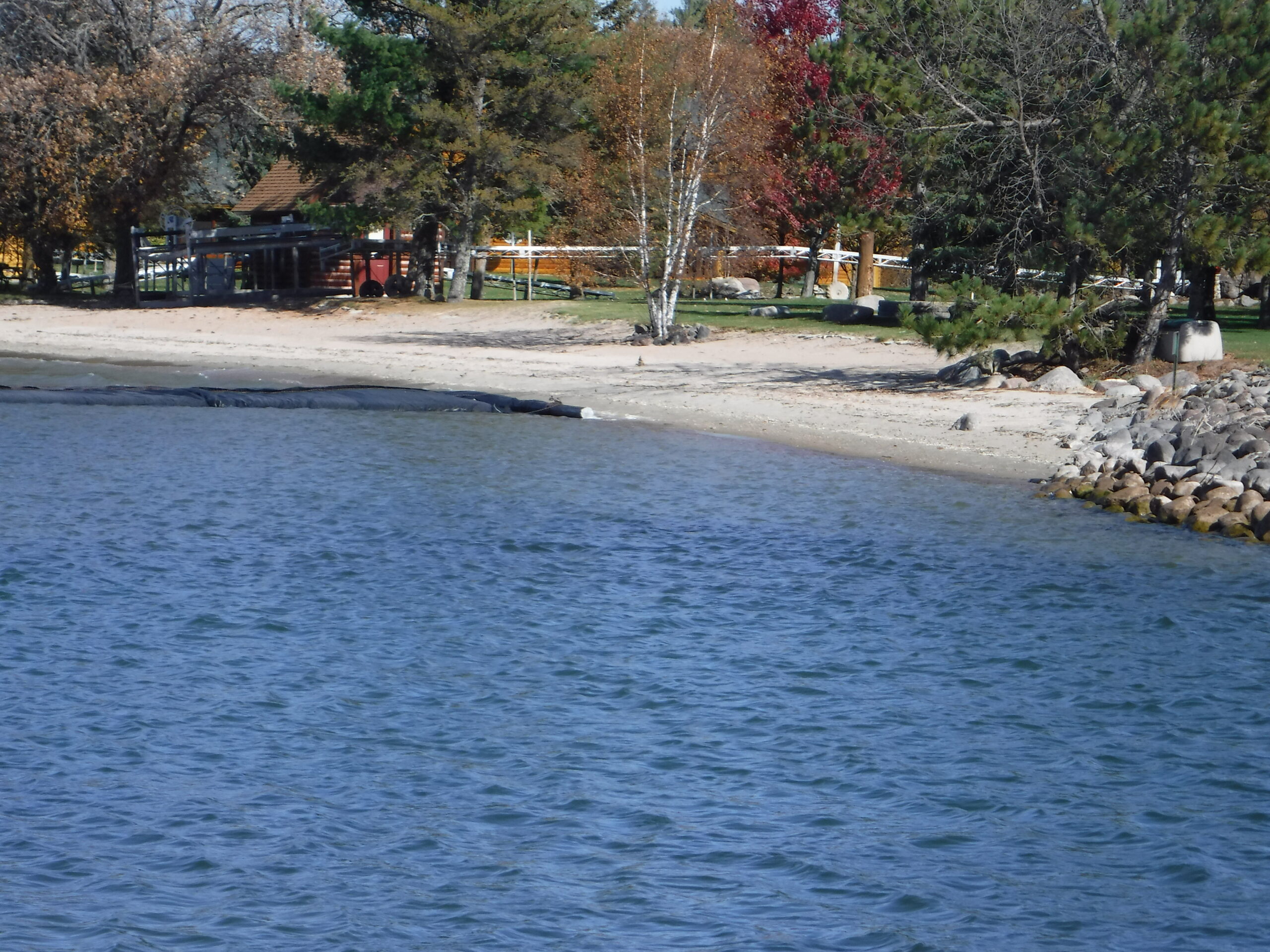
The 8t tall AquaDam® finally reached the ending bank and now the unit will need to finish filling.
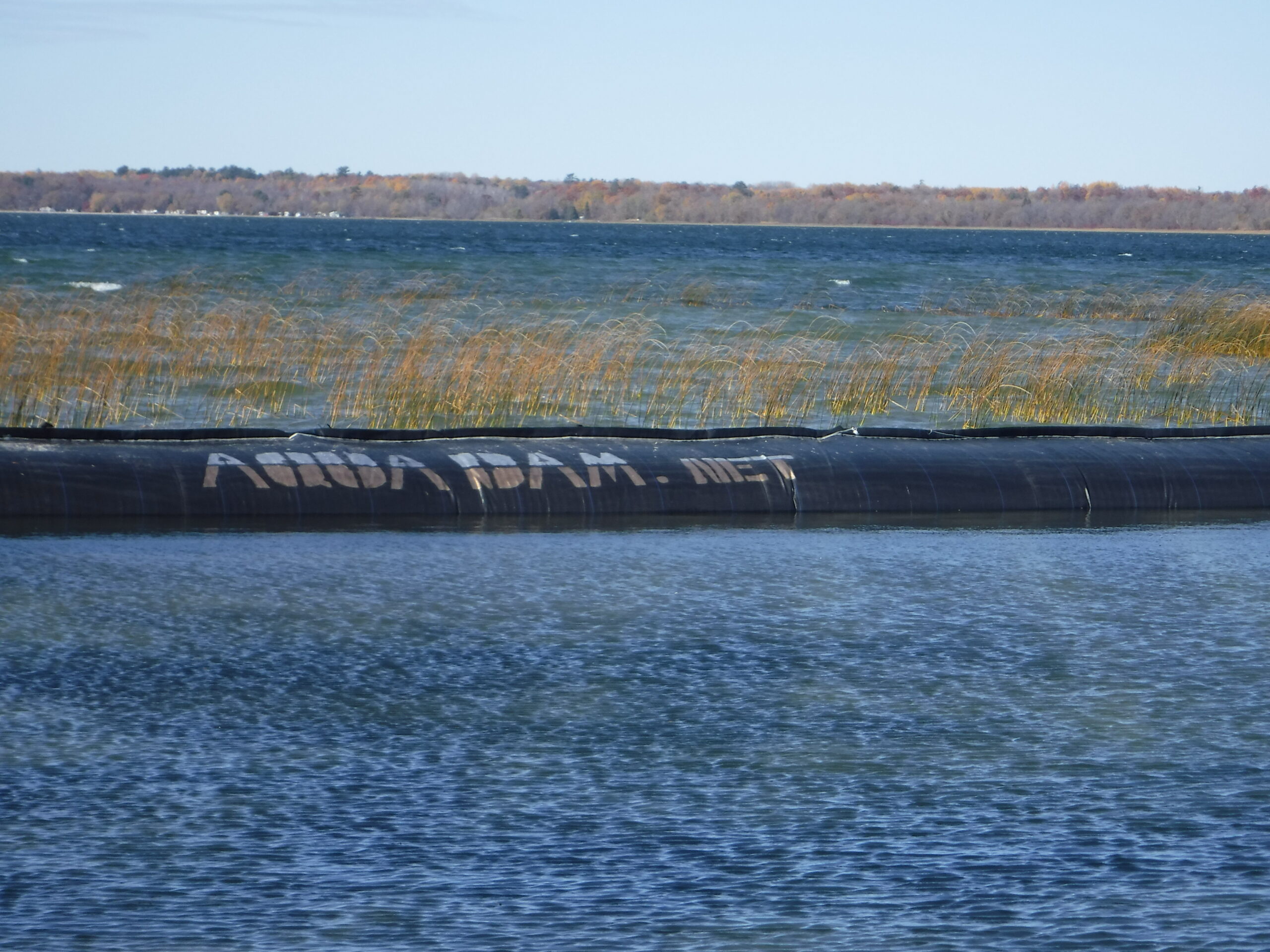
The 8ft tall 450ft long SCE AquaDam® in gaining head above the water it is in.
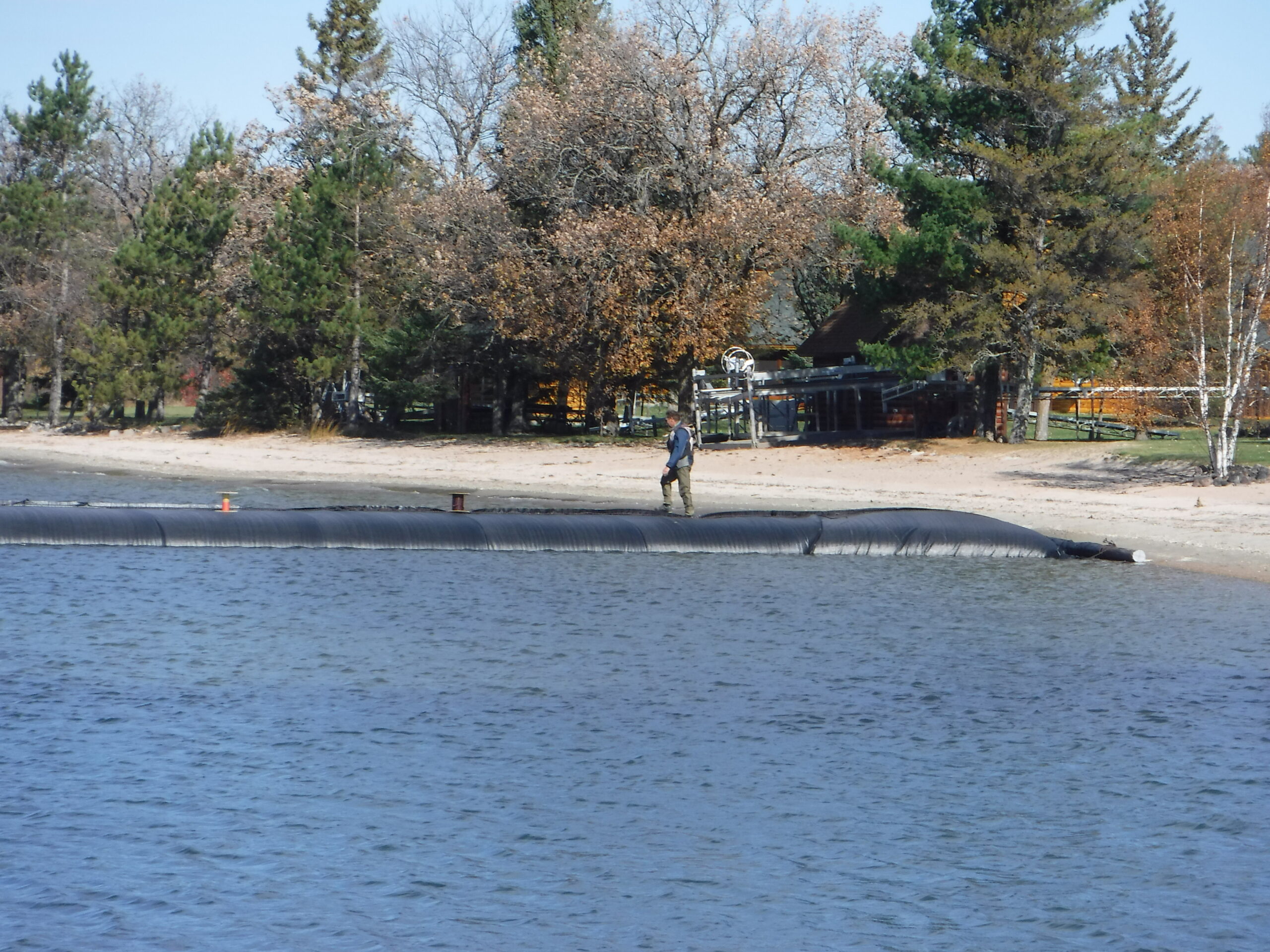
Air bubbles may form inside of the AquaDam® from the pumps. Sometimes these air bubbles can be moved out by walking from the closed end to the open end of the AquaDam.
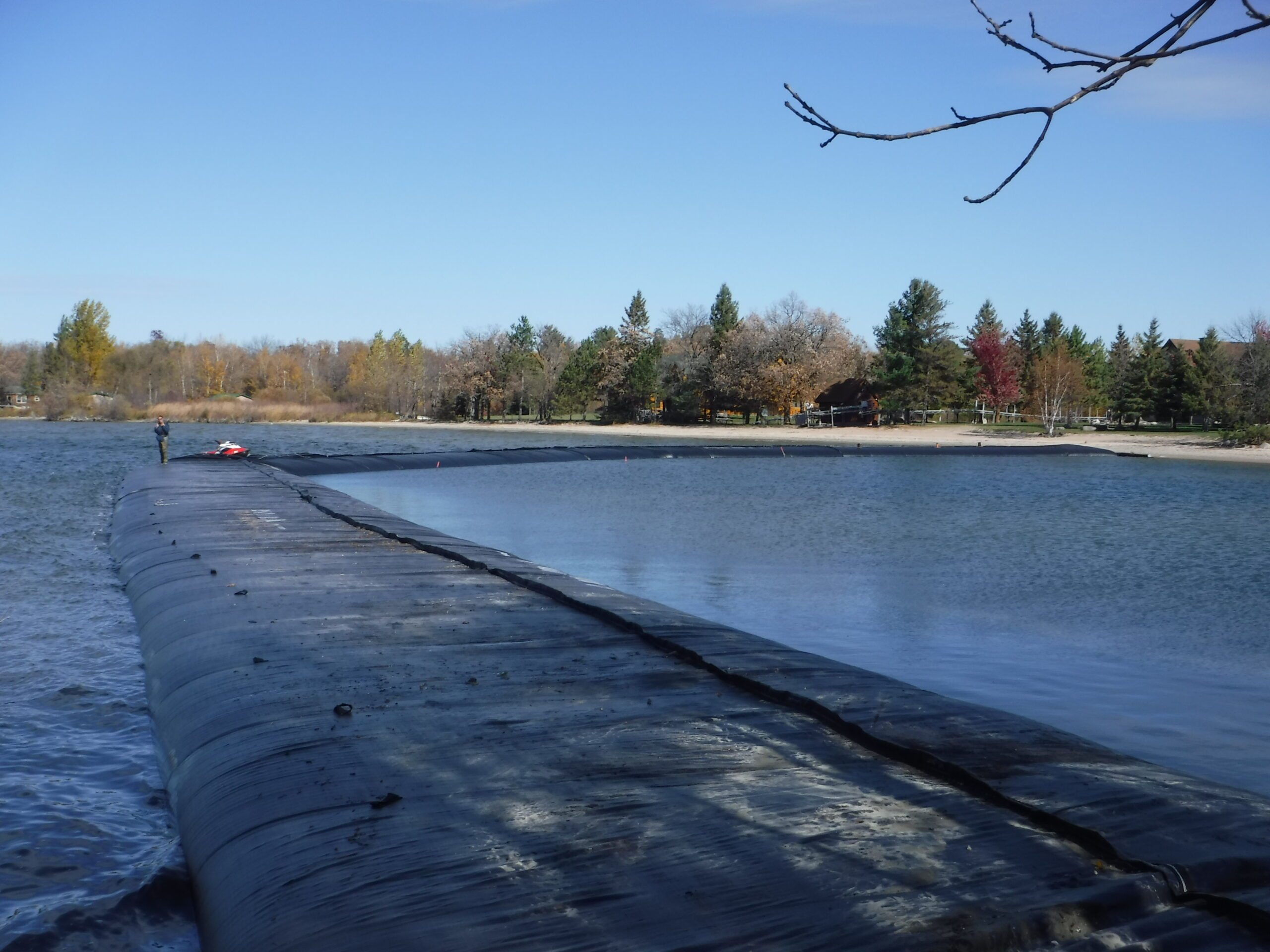
The 8ft tall SCE AquaDam® is now pretty much full and ready for the work area to be prepared for de-watering. Notice the difference in the motion of the water on the left versus the right of this photo.
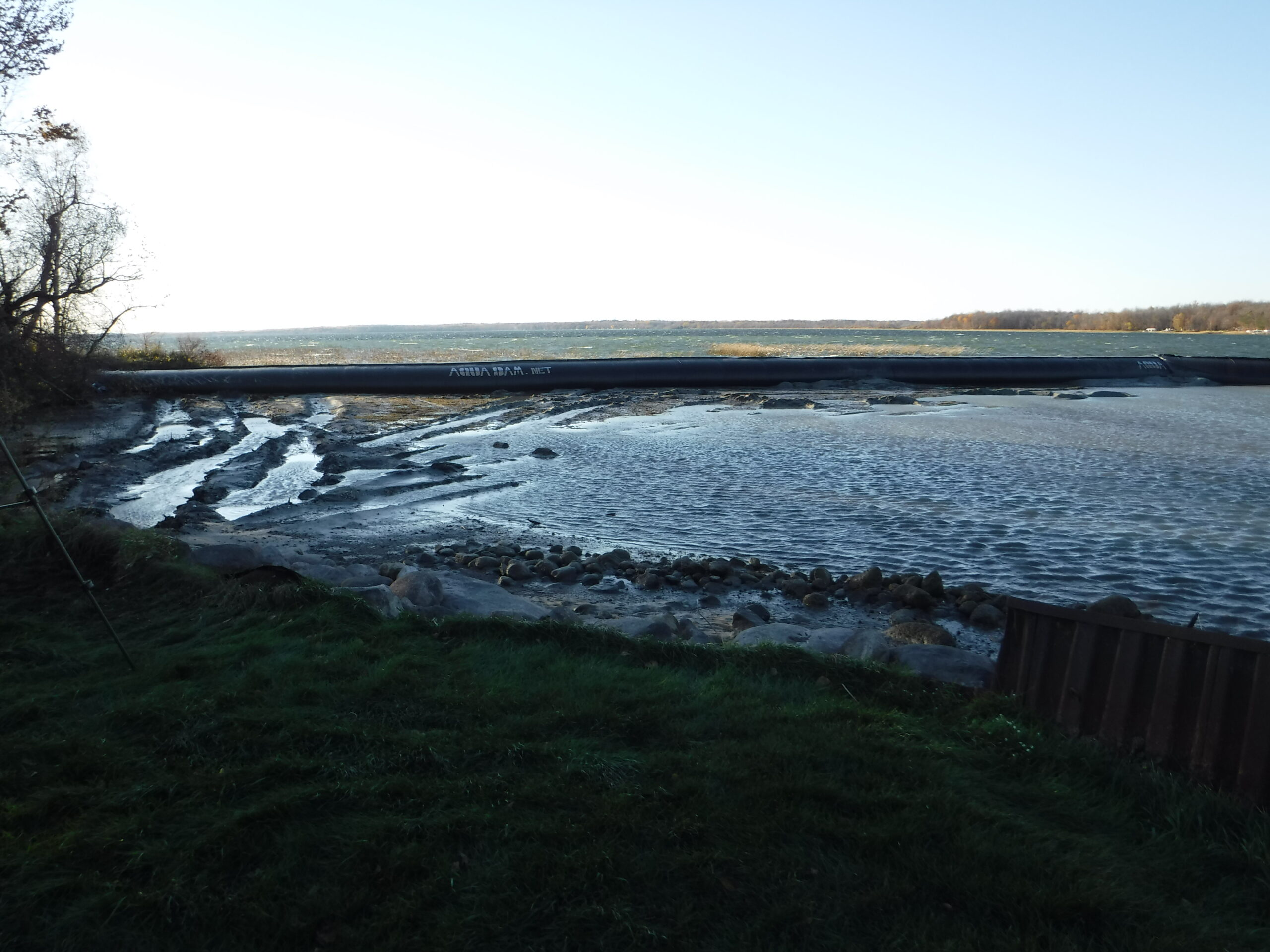
De-watering has begun and we can now see the bottom of parts of Cass Lake.
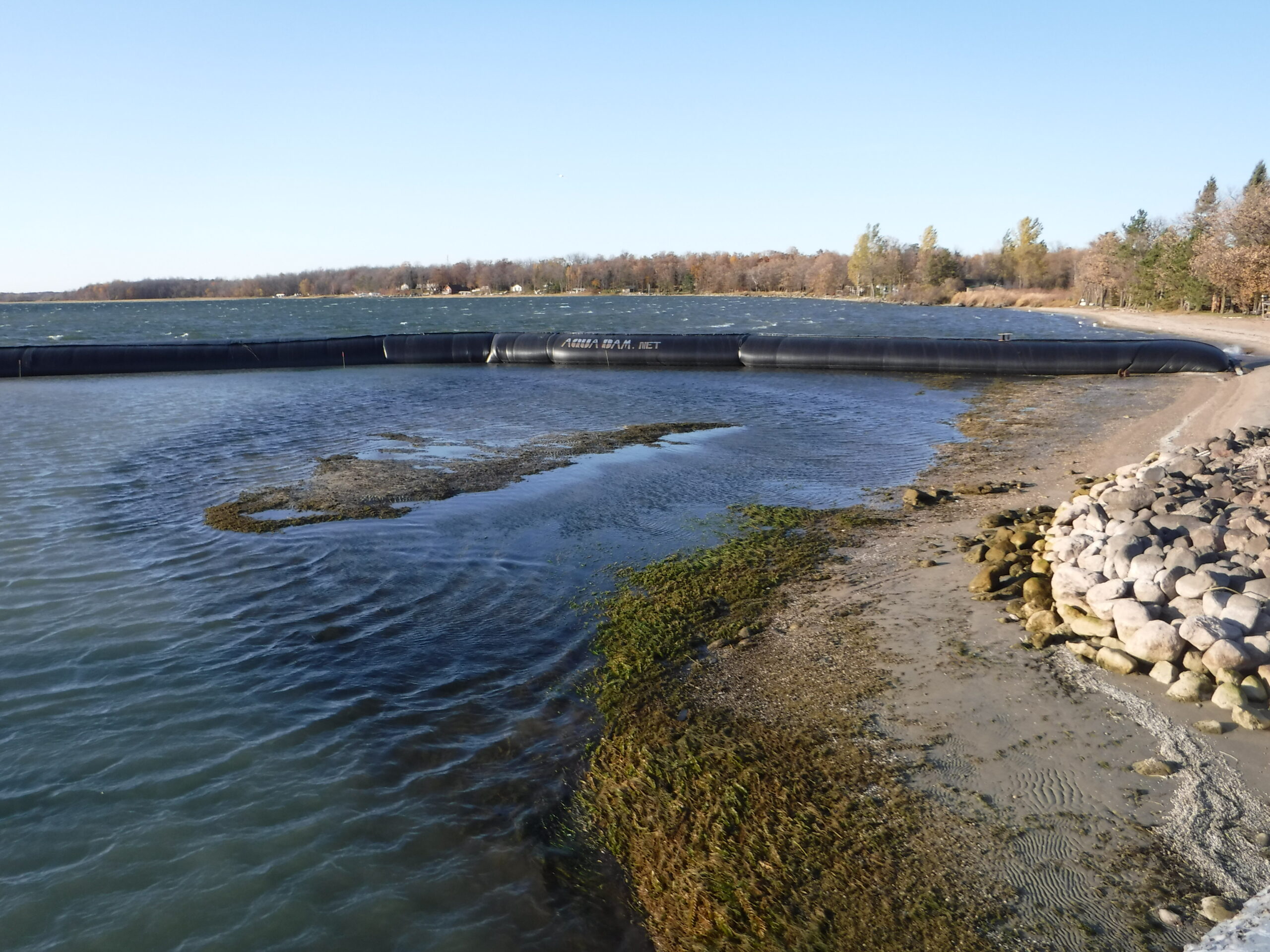
Here is another angle showing the work area being de-watered.
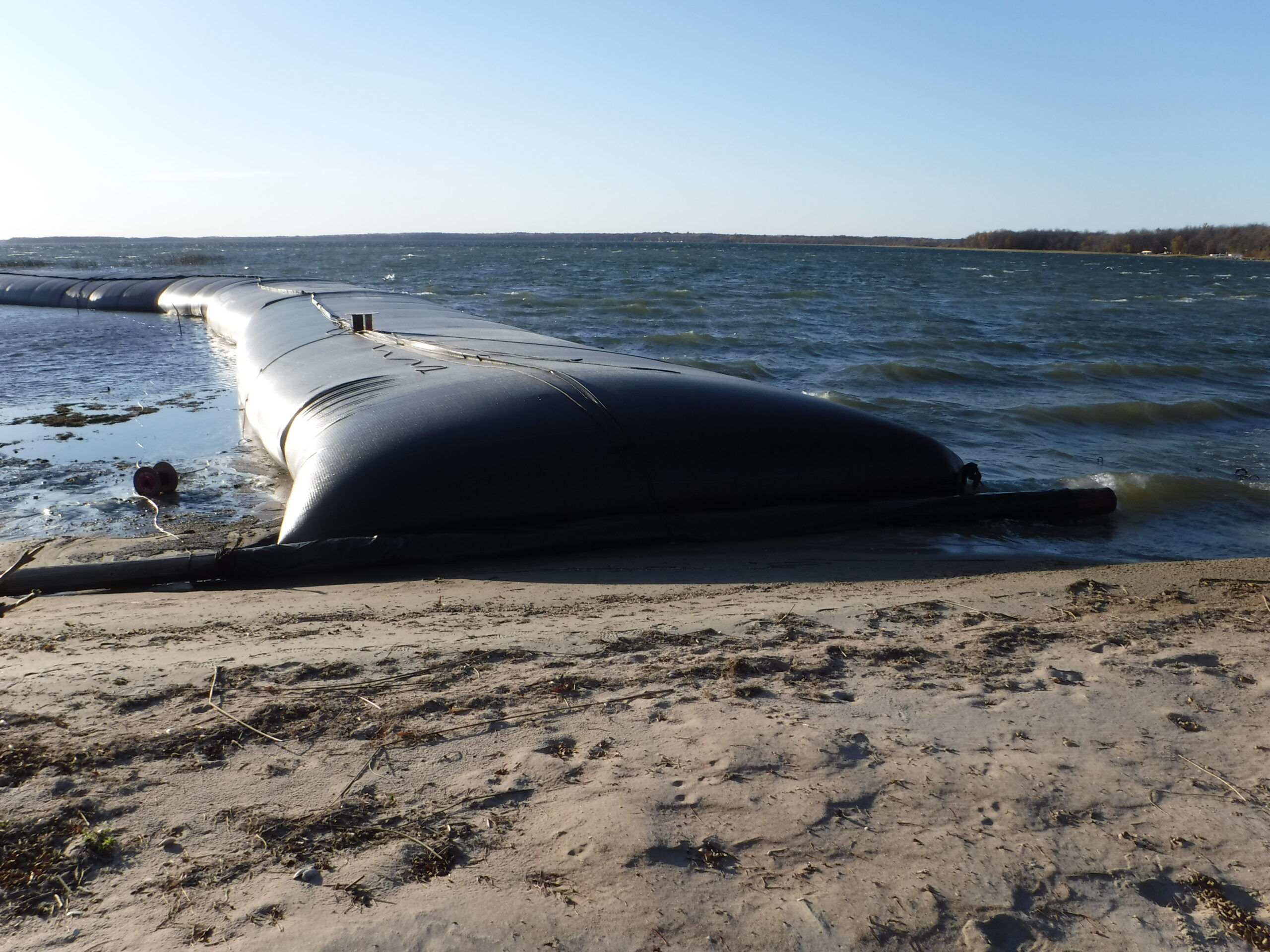
Here we can see the de-watered area on the left and the full lake elevation on the right, including wave height.
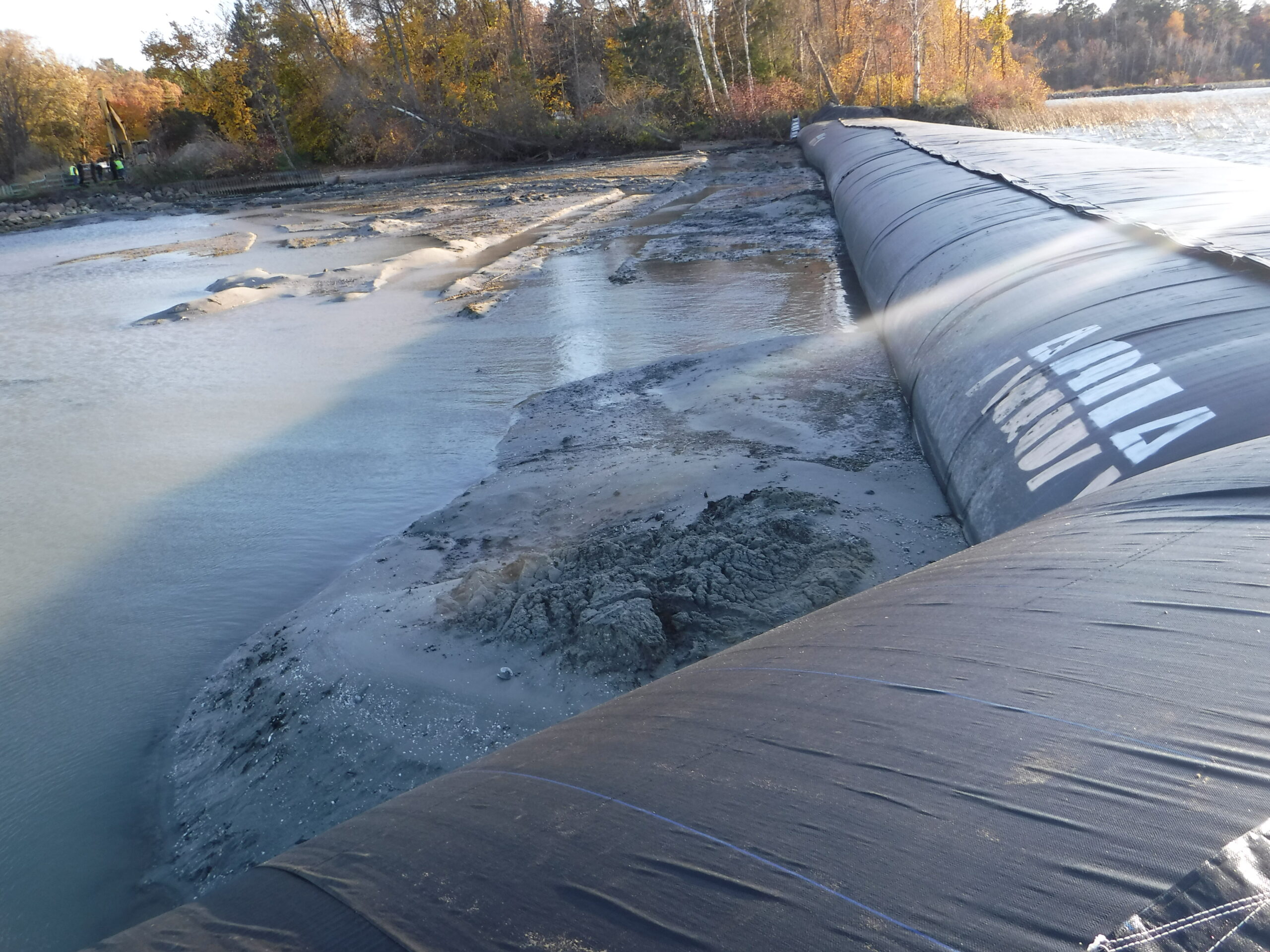
Sometimes support may be needed on the inner perimeter of an AquaDam. Here we can see mounds of non-abrasive fill material that were gently placed against the AquaDam® for support. A smaller AquaDam® may also be used to support the inner perimeter of an AquaDam.
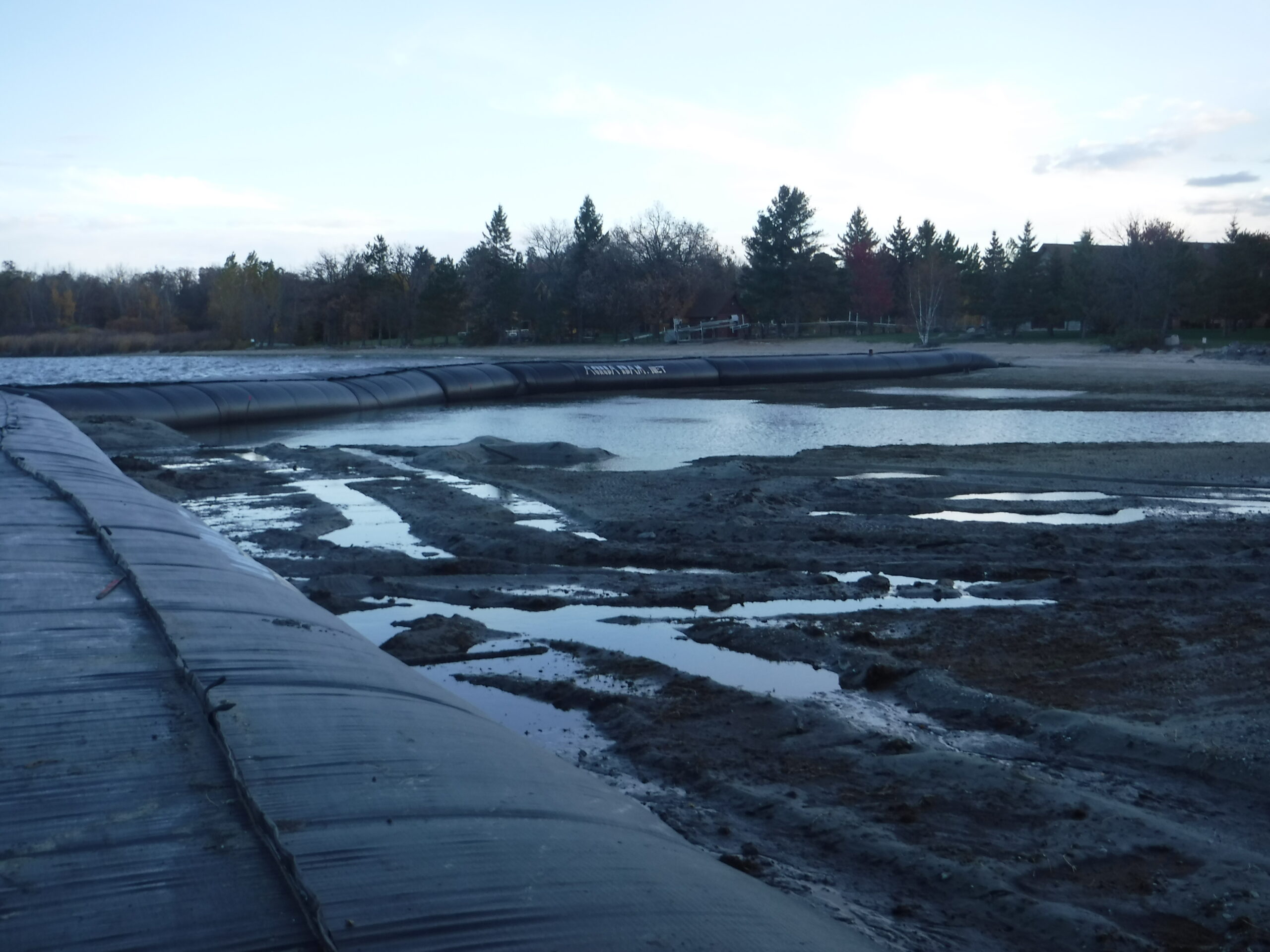
Seepage will nearly always exist and thus it must be addressed.
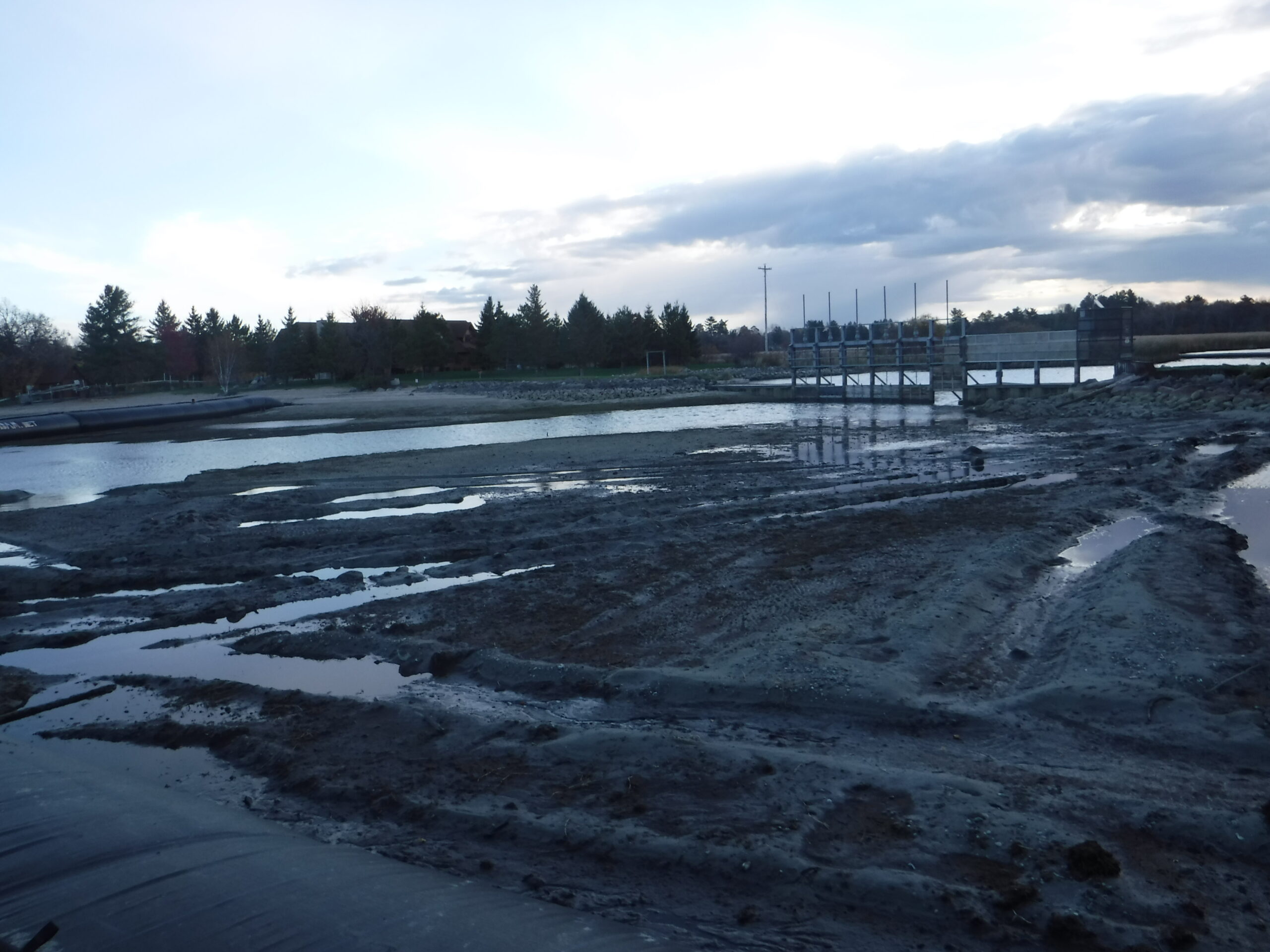
The AquaDam® is doing a great job here to help dam off Cass Lake.
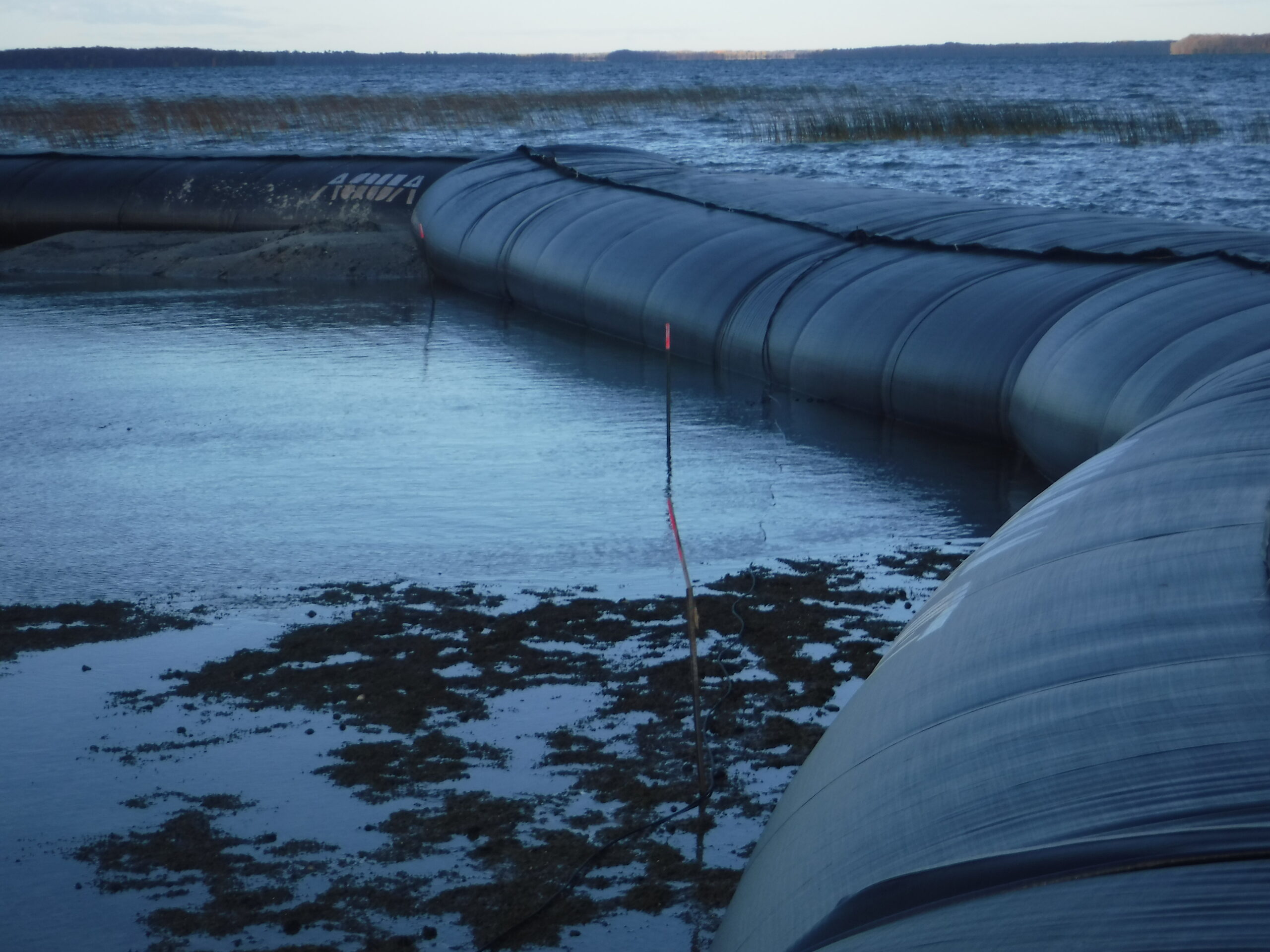
We can now see the deepest part of the construction zone, it is a channel that forms the head of the Mississippi River.
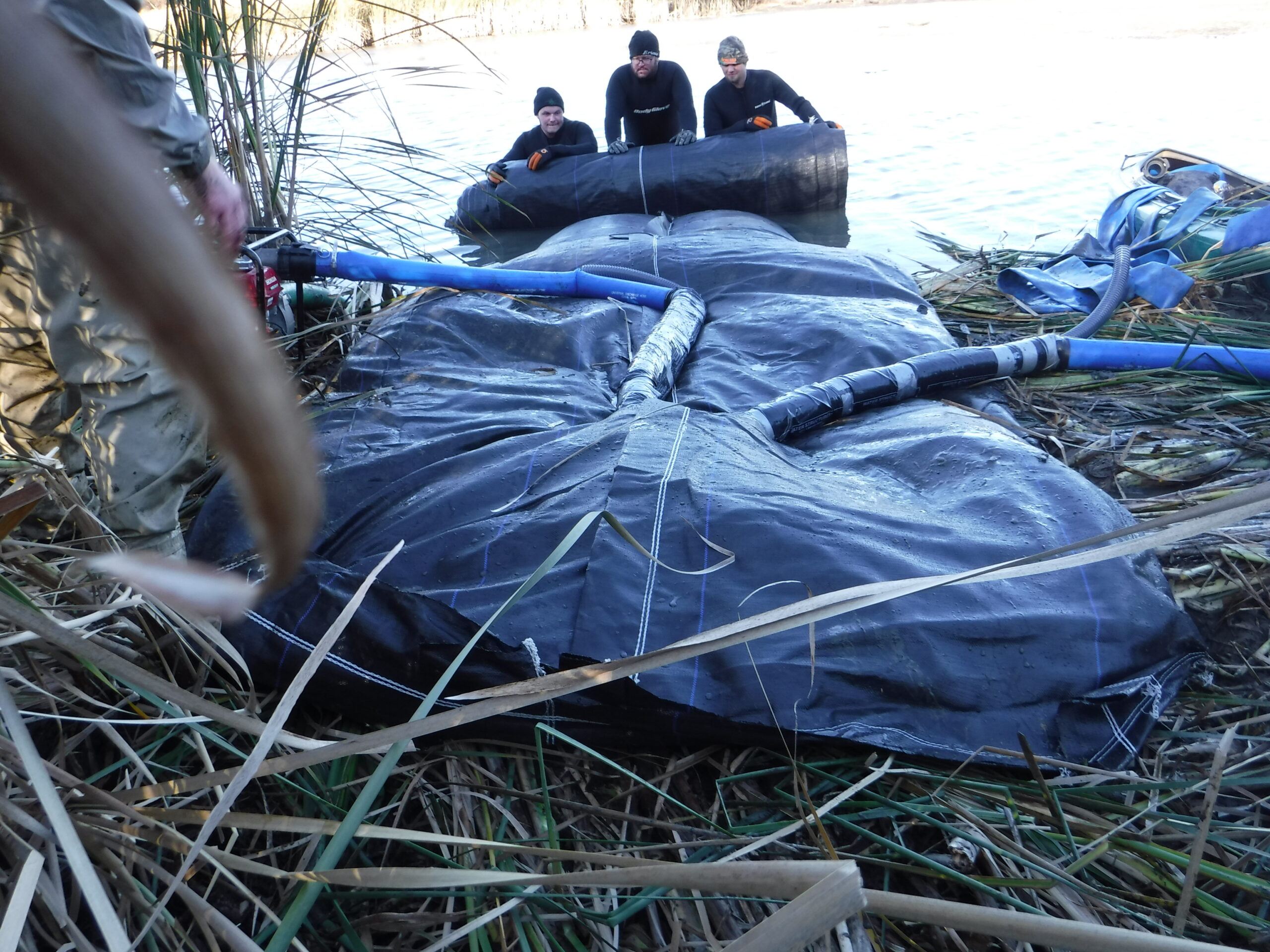
The downstream side of this cofferdam system used a 2.5ft tall 5ft wide (fully filled) 300ft long double closed end (DCE) AquaDam.
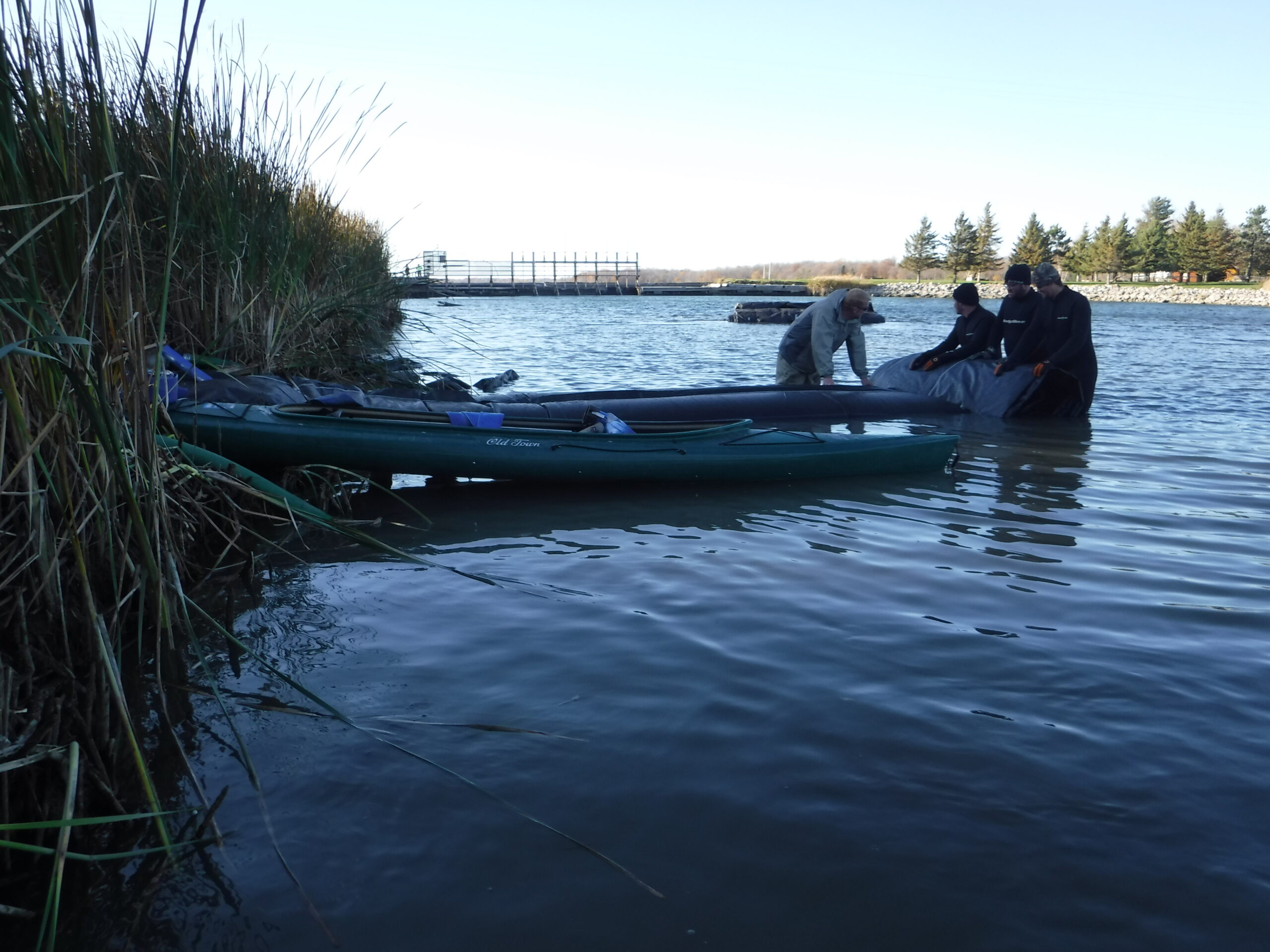
As the AquaDam® fills, workers stand in front of the unit to allow the unit to build head as it cross the Mississippi River.
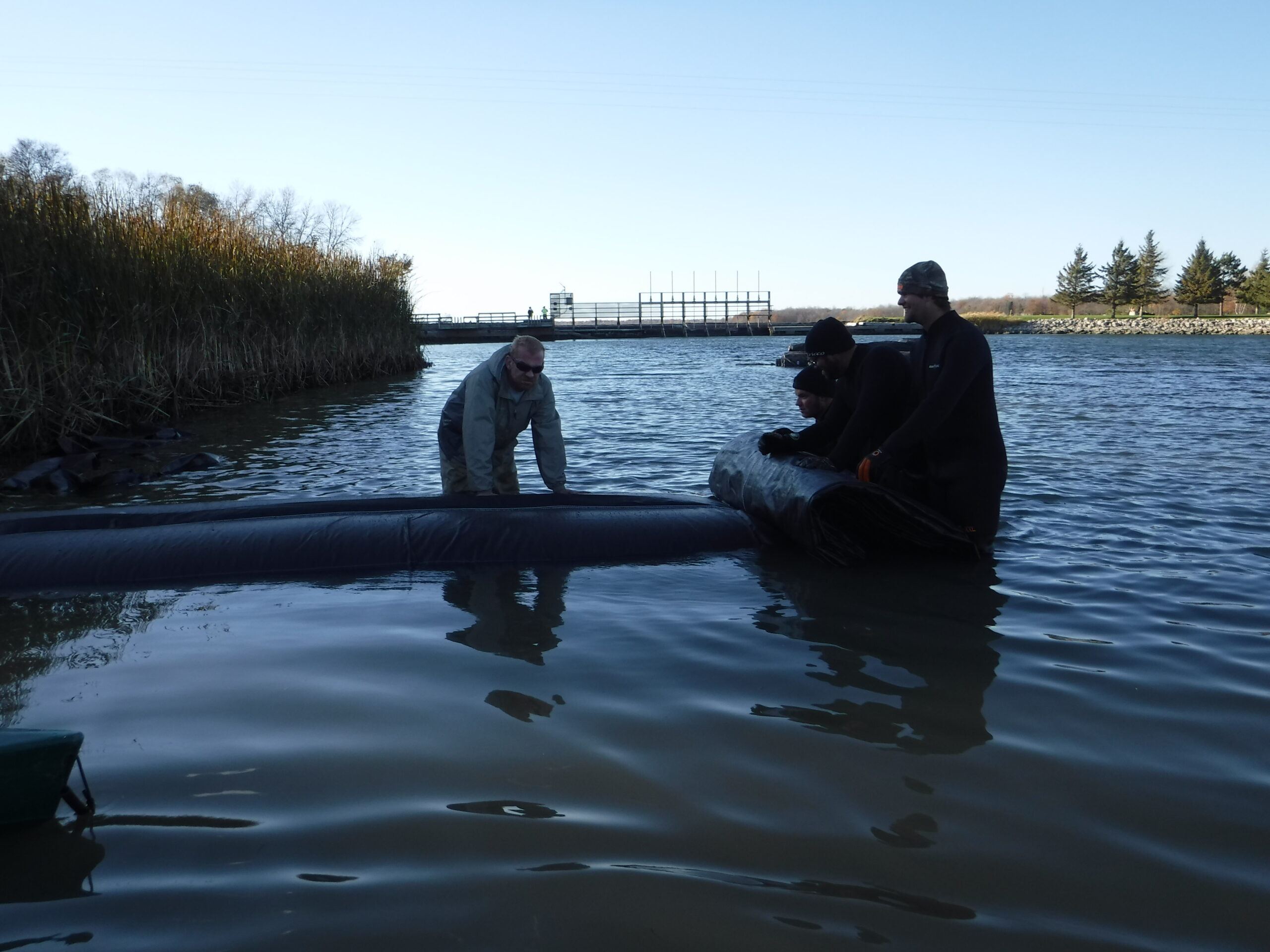
Another angle of the workers holding the AquaDam® roll waiting for the unit to build head.
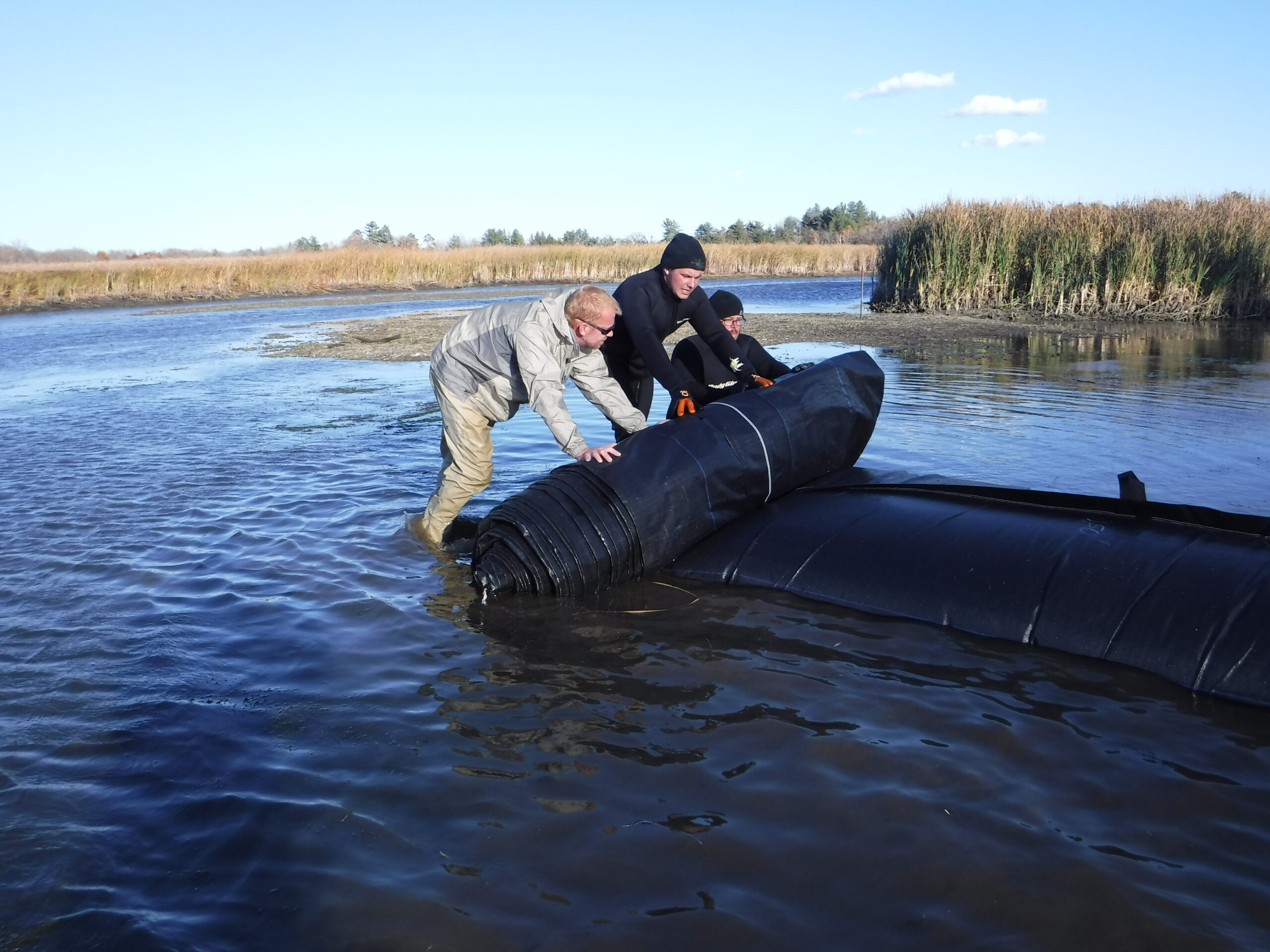
An AquaDam® will follow the contours (slope/grade) of where it lays, which will use up linear footage. Here we can see the AquaDam® rolling up onto a sandbar.
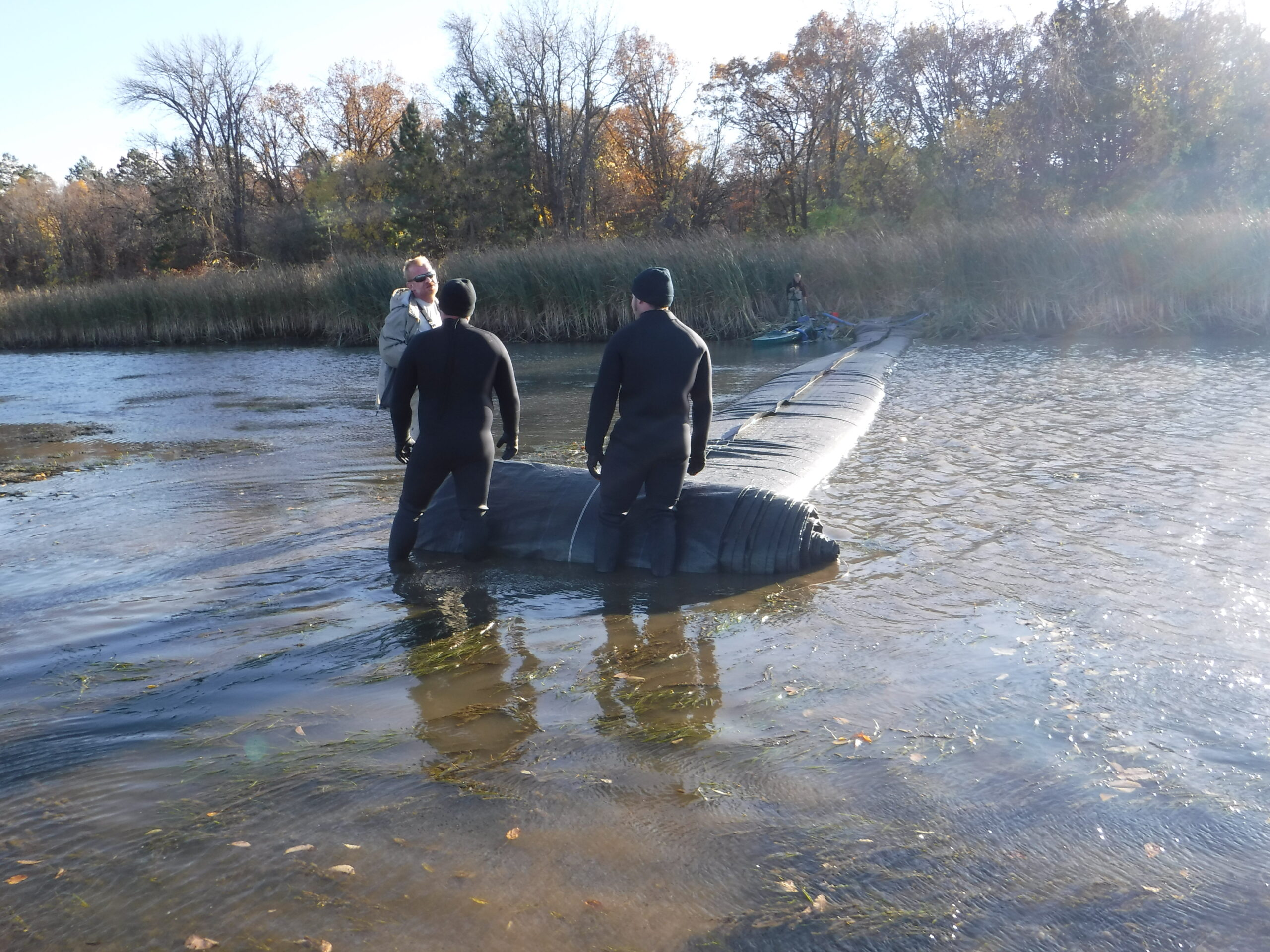
The workers are trying to keep a straight line, but that will never happen. This type of extra length should be considered when using an AquaDam.
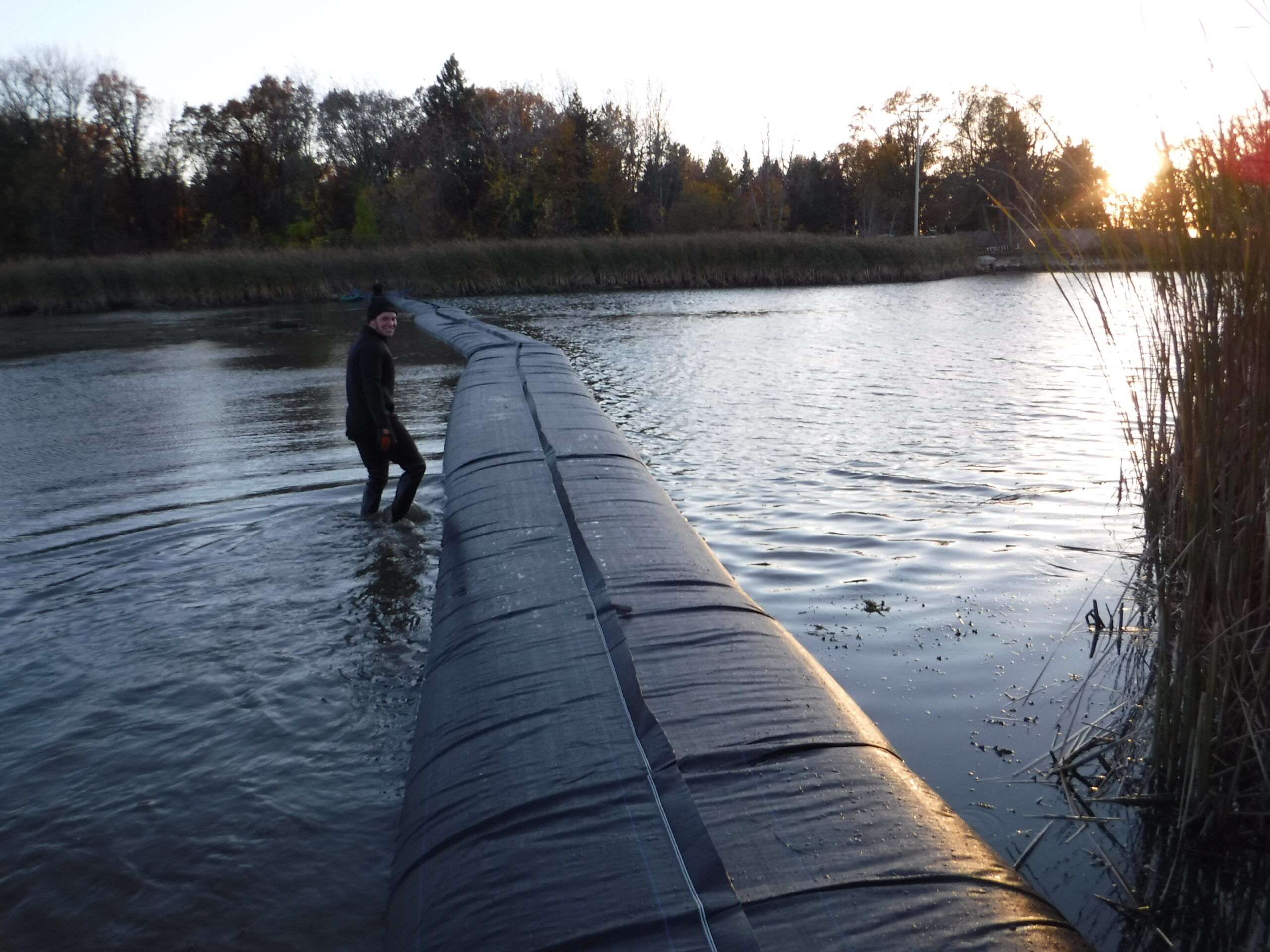
This 300ft long 2.5ft tall AquaDam® has almost made it to the ending bank. Notice the different water levels on the Left and Right of the AquaDam.
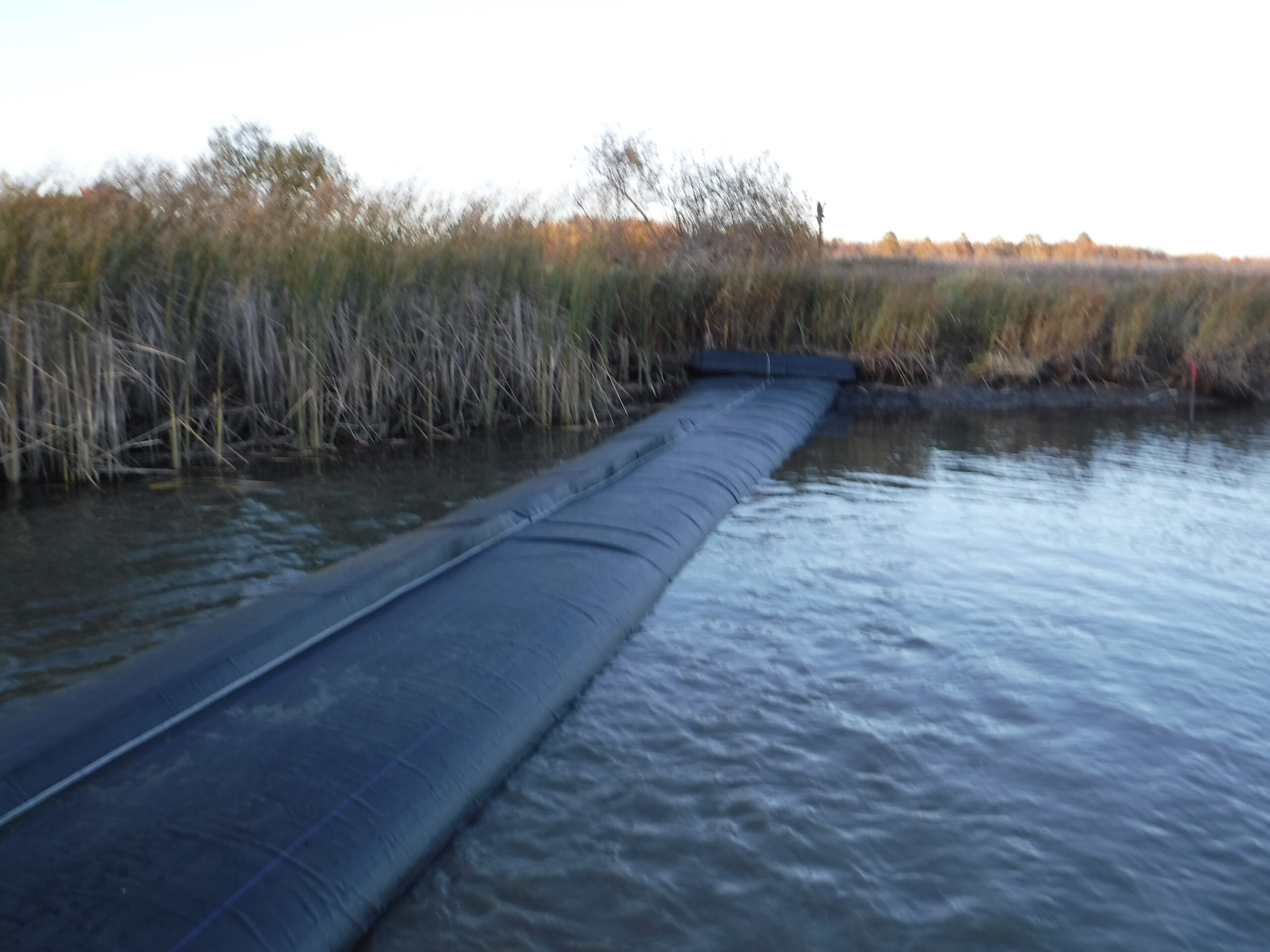
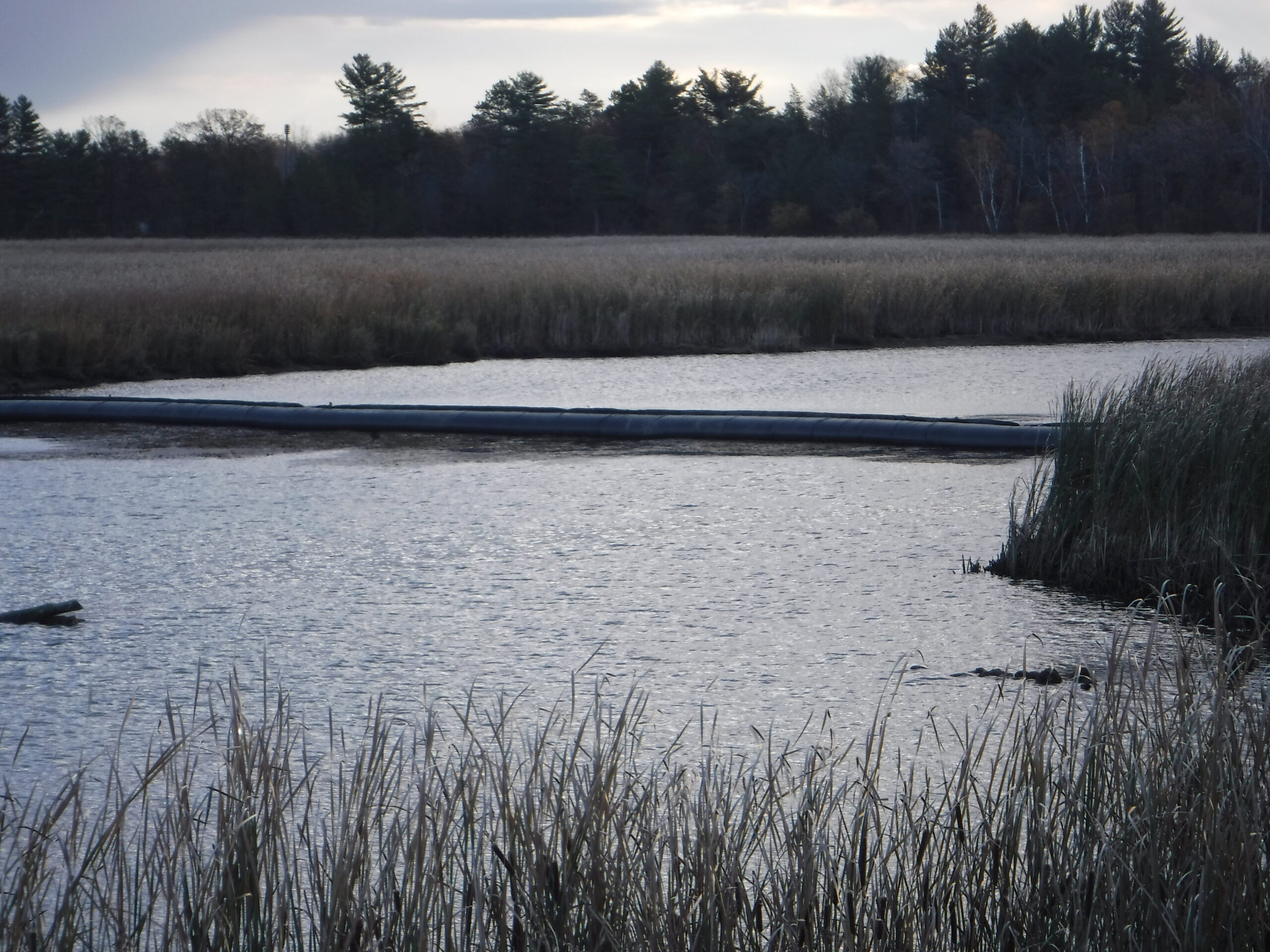
2.5ft tall 5ft wide 300ft long DCE AquaDam® installed and doing it's job.

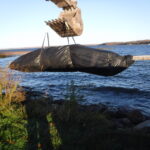
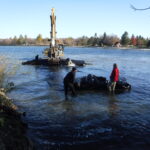
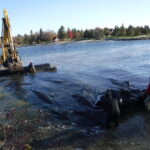
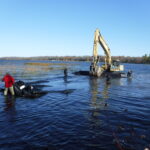
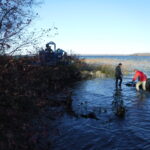
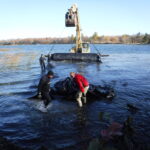
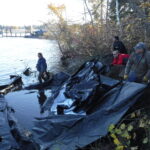
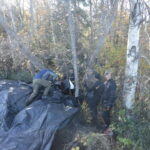
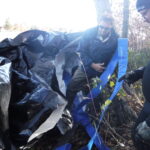
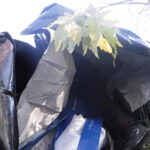
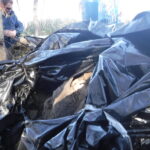
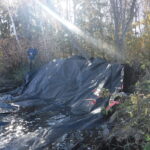
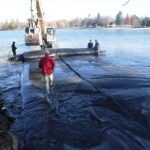
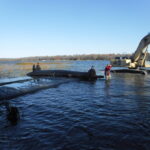
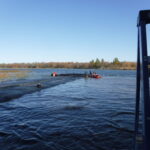
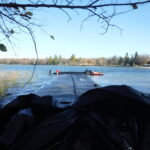
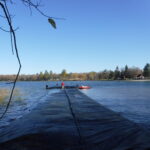
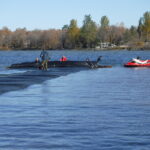
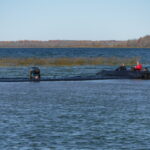
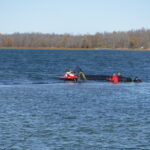
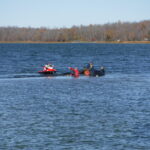
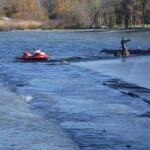
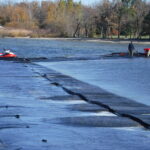
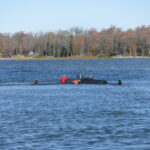
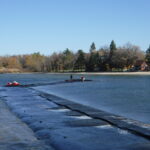
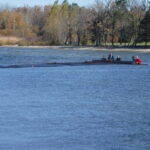
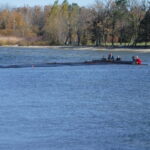
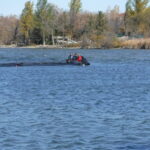
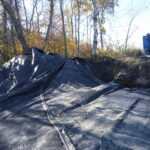
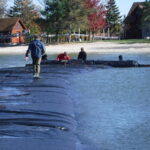
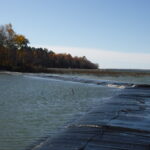
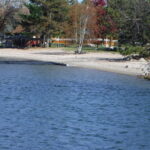
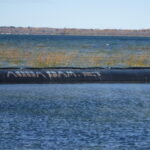
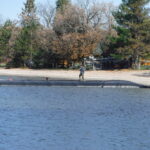
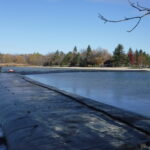
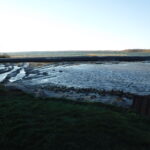
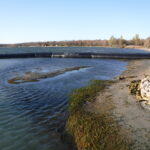
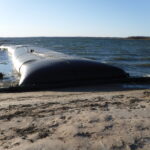
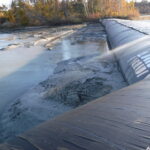
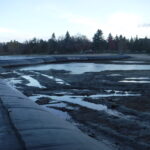
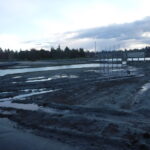
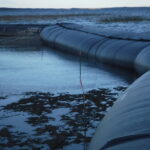
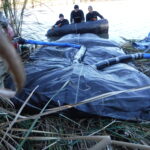
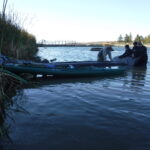
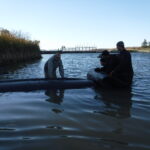
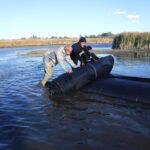
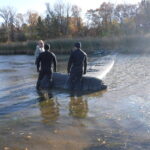
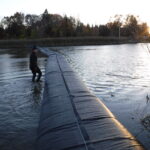
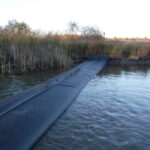

Knutson Dam, Cass Lake, Lake Dam Replacement
